A quick note about our cookies
We use cookies so we can give you the best website experience possible and to provide us with anonymous data so we can improve our marketing efforts. Read our cookie policy and privacy policy.
Login to your account
New here? Sign up in seconds!
Use social account

Or login with an email
Create an account
Already have an account? Login here
Or sign up with an email

We’re uploading new templates every week
We’d like to send you infrequent emails with brief updates to let you know of the latest free templates. Is that okay?

Reset your Password
Please enter the email you registered with and we will send you a link to reset your password!
Check your email!
We’ve just sent you a link to . Please follow instructions from our email.
- Most Popular Templates
- Corporate & Business Models
- Data (Tables, Graphs & Charts)
- Organization & Planning
- Text Slides
- Our Presentation Services
Get your own design team
Tailored packages for corporates & teams

Language Learning PowerPoint template
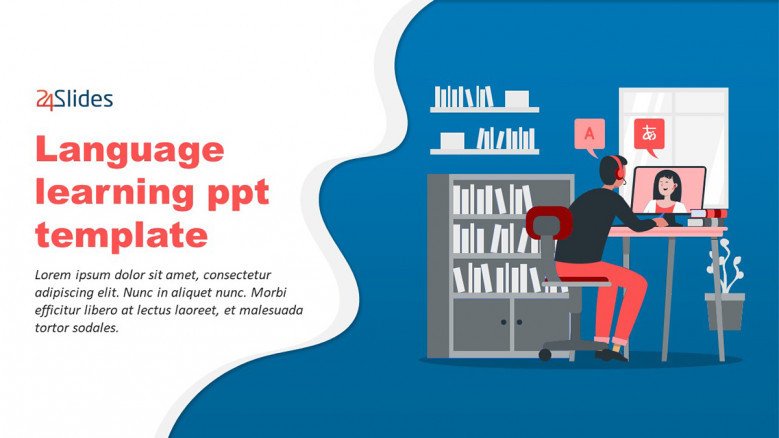
Number of slides: 10
Language learning is the active process of acquiring the skills to communicate in a foreign language. Professionals that know how to express their thoughts, feelings, and ideas in a second or third language are highly demanded in modern companies. If you’re in the language learning market, use this PowerPoint template to talk about the benefits of learning a new language, the most spoken languages in the world, the best habits for language learners, and more.
- About this template
- How to edit
- Custom Design Services
Free Language Learning PowerPoint Template
Language learning benefits.
Increase the interest of your public on learning a new language by addressing the benefits of language learning. In this slide you can focus on four powerful reasons and explain each one with fun examples.
Most Spoken Languages Slide
Help your potential students decide what to learn next by listing the most spoken languages in the world. This slide features a creative bar chart where you can display the six more popular languages. You can also showcase the six top languages programs your company offers.
Language Learners Habits
Learning a new language is not easy. It takes determination and will to really get to an advanced level. Close your presentation by giving some useful tips to language learners on how to build good habits for their language learning process.
Fun illustrations
This template comes with incredible illustrations to make your presentation a fun experience. Exactly as language learning should be!
Tips for language learners
You can also address how to choose a language to learn, ways to accelerate language learning, the best language learning apps, and more.
Language learning app
If you've developed a language learning app, use this presentation template to create online material for your users.
FIND OUT MORE ABOUT OUR CUSTOM DESIGN SERVICES
Todd Speranzo
VP of Marketing at Avella
"24Slides helps us get PowerPoints on-brand, and improve overall design in a timeframe that is often “overnight”. Leveraging the time zone change and their deep understanding of PowerPoint, our Marketing team has a partner in 24Slides that allows us to focus purely on slide content, leaving all of the design work to 24Slides."
Gretchen Ponts
Strata Research
"The key to the success with working with 24Slides has been the designers’ ability to revamp basic information on a slide into a dynamic yet clean and clear visual presentation coupled with the speed in which they do so. We do not work in an environment where time is on our side and the visual presentation is everything. In those regards, 24Slides has been invaluable."
"After training and testing, 24Slides quickly learnt how to implement our CVI, deliver at a high quality and provide a dedicated design team that always tries to accommodate our wishes in terms of design and deadlines."
What's included in Keynote Template?
I want this template customized class="mobile-none"for my needs!
69 beautifully designed slides 67 icons included PowerPoint and Keynote ready 16:9 full HD class="mobile-none"resolution
Check out other similar templates

Science Icon Template Pack

General PowerPoint Icons Template
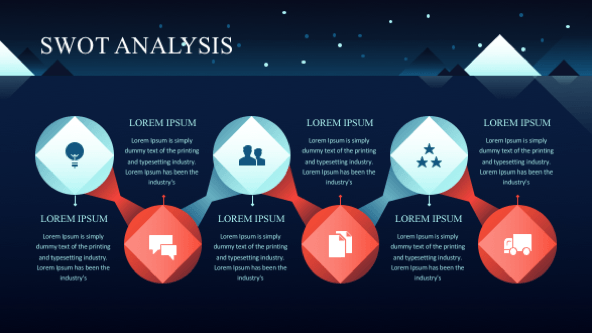
Dark themed 30 Slide Template Pack

Generic Mobile Pack Templates
The World of Teaching
Free Teacher resources including over 1000 Powerpoint presentations
English language powerpoint presentations free download ESL
PowerPoint presentations can be a great way to enhance your English language skills and deliver effective presentations. Here are a few topic ideas for PowerPoint presentations on English:
Introduction to English Grammar: This presentation can cover the basic components of English grammar, including parts of speech, sentence structure, and common grammatical rules.
English Vocabulary Building: Explore strategies for expanding your English vocabulary, such as word roots, prefixes, and suffixes. Provide examples and interactive exercises to reinforce learning.
Effective Communication in English: Discuss the importance of effective communication skills in English, including verbal and non-verbal communication, active listening, and cultural considerations.

Free powerpoint presentations on English Language
Feel free to learn and teach English using the resources below.
Below are a list of powerpoints.
These have been submitted by teachers to help other teachers. They can be used freely and modified to your own preferred format.
Please submit any of your powerpoints at the bottom of this page.
Anything you have also produced to enable other teachers around the world to benefit.
| Title (click to download) | Submitted by |
|---|---|
| Fran Roberts | |
| Helen Trevizo | |
| Lisa Ward | |
| Golla Madhubab | |
| Tim | |
| David Watuha Waneroba | |
| Lisa Ward | |
| Peter L | |
| Kathy | |
| Lisa Ward | |
| Helen Trevizo | |
| OW Holmes | |
| Jerald&Mary | |
| Teresa Smith | |
| Sushila Naidu | |
| Ben Swanson | |
| Amy Druce | |
| Aireen Laudato | |
| Aireen Laudato | |
| Amy Druce | |
| Lisa Ward | |
| Steve | |
| Adam Thompson | |
| Terrie Boston | |
| Terrie Boston | |
| Terrie Boston | |
| Terrie Boston | |
| Terrie Boston | |
| Terrie Boston | |
| Todd Mullins | |
| Terrie Boston | |
| Arnolfini | |
| Mark Wain | |
| Todd Mullins | |
| James Chambers | |
| James Chambers | |
| Jerald&Mary | |
| Joan Evans | |
| John Duffy | |
| Lisa Ward | |
| Lisa Ward | |
| Kathy | |
| GCMS | |
| Steve | |
| J Stoner | |
| E Kaye | |
| Gavin Lees | |
| Lisa Ward | |
| Gavin Lees | |
| Gavin Lees | |
| Tricia | |
| Tricia | |
| Steve | |
| Steve | |
| Ben Swanson | |
| Irene Hui | |
| Viviane Matos | |
| Peter L | |
| Gaile Wotherspoon | |
| Tricia | |
| Tricia | |
| Tricia | |
| Gaile Wotherspoon | |
| Sarah Lewis | |
| Sandra K Dow | |
| Bryan | |
| Jessica | |
| Cabell Charles | |
| Golla Madhubabu | |
| Chris Davies | |
| Golla Madhubabu | |
| AHS | |
| Tricia | |
| Tricia | |
| Tricia | |
| MA Chemmal | |
| Ken Kranz | |
| Jeff | |
| Roger O | |
| Aireen Laudato | |
| David Woricker | |
| Lisa Ward | |
| Kelli Hicks | |
| Kelli Hicks | |
| Kathy | |
| Lisa Ward | |
| Lisa Ward | |
| Ben Swanson | |
| Anna Connolly | |
| Terrie Boston | |
| Tammy | |
| Lisa Ward | |
| Ben Swanson | |
| NFDL | |
| Todd Mullins | |
| Ben Swanson | |
| Ben Swanson | |
Please submit any of your own powerpoints using the form below. It is very much appreciated.
Your Name (required)
Your Email (required)
Your Message
Remember to use engaging visuals, clear explanations, and interactive elements in your PowerPoint presentation to make it more engaging and memorable.
English Idioms and Expressions: Introduce common English idioms and expressions, their meanings, and how to use them appropriately in conversation.
English Pronunciation and Accent: Explain the basics of English pronunciation, including vowel and consonant sounds. Provide audio examples and practice exercises to improve pronunciation.
English as a Second Language (ESL) Teaching Techniques: Share effective teaching strategies for ESL learners, including interactive activities, games, and resources for language acquisition.
English Language Varieties: Explore the different varieties of English worldwide, including British English, American English, and other regional accents. Discuss variations in vocabulary, grammar, and pronunciation.
English Language Learning Resources: Compile a list of useful resources for learning English, such as websites, apps, online courses, and language exchange platforms.

- Skip to Nav
- Skip to Main
- Skip to Footer

- Saved Articles
- Newsletters

How to Use Oral Presentations to Help English Language Learners Succeed
Please try again

Excerpted from “ The ELL Teacher’s Toolbox: Hundreds of Practical Ideas to Support Your Students ,” by Larry Ferlazzo and Katie Hull Sypnieski, with permission from the authors.
Having the confidence to speak in front of others is challenging for most people. For English Language Learners, this anxiety can be heightened because they are also speaking in a new language. We’ve found several benefits to incorporating opportunities for students to present to their peers in a positive and safe classroom environment. It helps them focus on pronunciation and clarity and also boosts their confidence. This type of practice is useful since students will surely have to make presentations in other classes, in college, and/or in their future jobs. However, what may be even more valuable is giving students the chance to take these risks in a collaborative, supportive environment.
Presentations also offer students the opportunity to become the teacher—something we welcome and they enjoy! They can further provide valuable listening practice for the rest of the class, especially when students are given a task to focus their listening.
Research confirms that in order for ELLs to acquire English they must engage in oral language practice and be given the opportunity to use language in meaningful ways for social and academic purposes (Williams & Roberts, 2011). Teaching students to design effective oral presentations has also been found to support thinking development as “the quality of presentation actually improves the quality of thought, and vice versa” (Živković, 2014, p. 474). Additionally, t he Common Core Speaking and Listening Standards specifically focus on oral presentations. These standards call for students to make effective and well-organized presentations and to use technology to enhance understanding of them.
GUIDELINES AND APPLICATION
Oral presentations can take many different forms in the ELL classroom—ranging from students briefly presenting their learning in small groups to creating a multi-slide presentation for the whole class. In this section, we give some general guidelines for oral presentations with ELLs. We then share ideas for helping students develop their presentation skills and describe specific ways we scaffold both short and long oral presentations.
We keep the following guidelines in mind when incorporating oral presentations into ELL instruction:
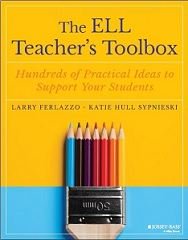
Length —We have students develop and deliver short presentations (usually 2-4 minutes) on a regular basis so they can practice their presentation skills with smaller, less overwhelming tasks. These presentations are often to another student or a small group. Once or twice a semester, students do a longer presentation (usually 5-8 minutes), many times with a partner or in a small group.
Novelty —Mixing up how students present (in small groups, in pairs, individually) and what they use to present (a poster, a paper placed under the document camera, props, a slide presentation, etc.) can increase engagement for students and the teacher!
Whole Class Processing -- We want to avoid students “tuning out” during oral presentations. Not only can it be frustrating for the speakers, but students also miss out on valuable listening practice. During oral presentations, and in any activity, we want to maximize the probability that all students are thinking and learning all the time. Jim Peterson and Ted Appel, administrators with whom we’ve worked closely, call this “whole class processing” (Ferlazzo, 2011, August 16) and it is also known as active participation. All students can be encouraged to actively participate in oral presentations by being given a listening task-- taking notes on a graphic organizer, providing written feedback to the speaker, using a checklist to evaluate presenters, etc.
Language Support —It is critical to provide ELLs, especially at the lower levels of English proficiency, with language support for oral presentations. In other words, thinking about what vocabulary, language features and organizational structures they may need, and then providing students with scaffolding, like speaking frames and graphic organizers. Oral presentations can also provide an opportunity for students to practice their summarizing skills. When students are presenting information on a topic they have researched, we remind them to summarize using their own words and to give credit when using someone else’s words.
Technology Support —It can’t be assumed that students have experience using technology tools in presentations. We find it most helpful using simple tools that are easy for students to learn (like Powerpoint without all the “bells and whistles” or Google Slides). We also emphasize to students that digital media should be used to help the audience understand what they are saying and not just to make a presentation flashy or pretty. We also share with our students what is known as “The Picture Superiority Effect”-- a body of research showing that people are better able to learn and recall information presented as pictures as opposed to just being presented with words (Kagan, 2013).
Groups -- Giving ELLs the opportunity to work and present in small groups is helpful in several ways. Presenting as a group (as opposed to by yourself) can help students feel less anxious. It also offers language-building opportunities as students communicate to develop and practice their presentations. Creating new knowledge as a group promotes collaboration and language acquisition--an ideal equation for a successful ELL classroom!
Teacher feedback/student evaluation --The focus of oral presentations with ELL students should be on the practice and skills they are gaining, not on the grade or “score” they are earning. Teachers can give out a simple rubric before students create their presentations. Then students can keep these expectations in mind as they develop and practice their presentations. The teacher, or classmates, can then use the rubric to offer feedback to the speaker. We also often ask students to reflect on their own presentation and complete the rubric as a form of self-assessment. Figure 30.1 – “Presentation Peer Evaluation Rubric” , developed by talented student teacher Kevin Inlay (who is now a teacher in his own classroom), is a simple rubric we used to improve group presentations in our ELL World History class.
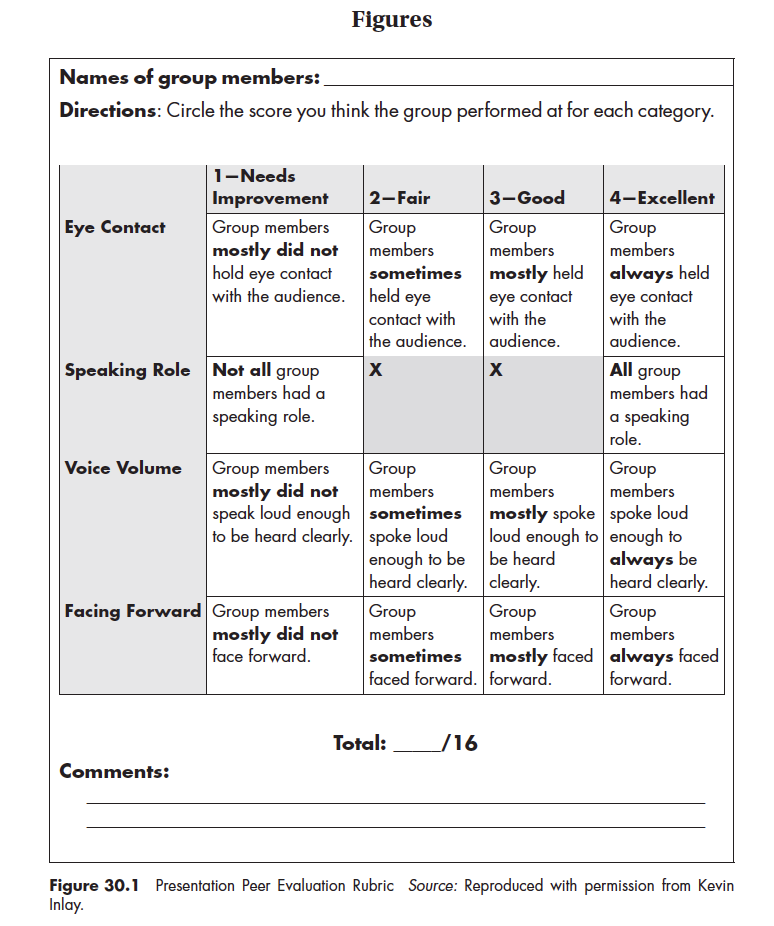
Teaching Presentation Skills
We use the following two lesson ideas to explicitly teach how to develop effective presentation skills:
LESSON ONE: Speaking and Listening Do’s and Don’ts
We help our students understand and practice general presentation skills through an activity we call Speaking and Listening “Do’s and Don’ts.” We usually spread this lesson out among two class periods.
We first ask students to create a simple T-chart by folding a piece of paper in half and labeling one side “Do” and the other side “Don’t.” We then post Figure 30.2 “Speaking Do’s and Don’ts” on the document camera and display the first statement (the rest we cover with a blank sheet of paper).
We read the first statement, “Make eye contact with the audience,” and ask students if this is something they want to do when they are giving a presentation or if it is something they don’t want to do. Students write the statement where they think it belongs--under the “Do” column or “Don’t” Column. Students then share their answer with a partner and discuss why they put it in that column. After calling on a few pairs to share with the class, we move down the list repeating the same process of categorizing each statement as a “Do” or a “Don’t.” Students write it on their chart and discuss why it should be placed there.
After categorizing the statements for speaking, we give students Figure 30.3 “Listening Do’s and Don’ts .” We tell students to work in pairs to categorize the statements as something they do or something they don’t want to do when listening to a student presentation. This time, we ask students to make a quick poster with the headings “Do’s” and “Don’ts” for Listening. Under each heading students must list the corresponding statements--the teacher can circulate to check for accuracy. Students are asked to talk about why each statement belongs in each category and should be prepared to share their reasoning with the class. Students must also choose one “do” statement and one “don’t” statement to illustrate on their poster. Students can present their posters in small groups or with the whole class. This serves as a great opportunity to apply the speaking and listening “do’s” they just reviewed and heightens their awareness of the “don’ts!”
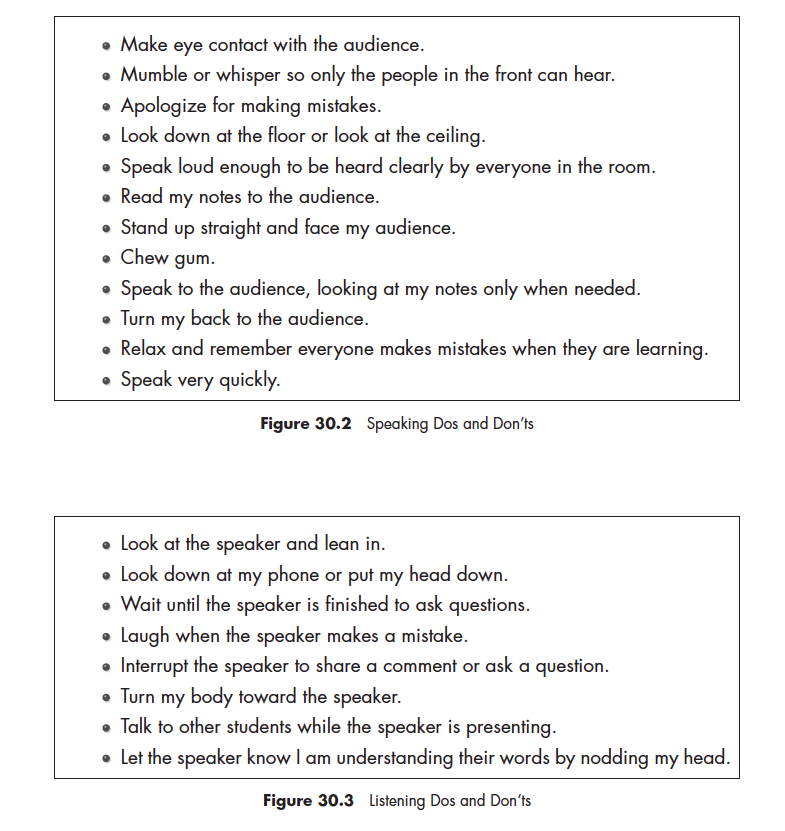
A fun twist, that also serves as a good review on a subsequent day, is to ask groups of students to pick two or three “do’s” and “don’ts” from both Speaking and Listening to act out in front of the class.
LESSON TWO Slide Presentations Concept Attainment
We periodically ask students to make slide presentations using PowerPoint or Google Slides to give them practice with developing visual aids (see the Home Culture activity later in this section). We show students how to make better slides, along with giving students the language support they may need in the form of an outline or sentence starters. An easy and effective way to do this is through Concept Attainment.
Concept Attainment involves the teacher identifying both "good" and "bad" examples of the intended learning objective. In this case, we use a PowerPoint containing three “good” slides and three “bad” ones (see them at The Best Resources For Teaching Students The Difference Between A Good and a Bad Slide ).
We start by showing students the first example of a “good” or “yes” slide (containing very little text and two images) and saying, “This is a yes.” However, we don’t explain why it is a “yes.” Then we show a “bad” or “no” example of a slide (containing multiple images randomly placed with a very “busy background”), saying, “This is a no” without explaining why. Students are then asked to think about them, and share with a partner why they think one is a "yes" and one is a "no."
At this point, we make a quick chart on a large sheet of paper (students can make individual charts on a piece of paper) and ask students to list the good and bad qualities they have observed so far. For example, under the “Good/Yes” column it might say “Has less words and the background is simple” and under the “Bad/No” column “Has too many pictures and the background is distracting.”
We then show the second “yes” example (containing one image with a short amount of text in a clear font) and the “no” example (containing way too much text and using a less clear font style). Students repeat the “think-pair-share” process and then the class again discusses what students are noticing about the “yes” and “no” examples. Then they add these observations to their chart.
Students repeat the whole process a final time with the third examples. The third “yes” example slide contains one image, minimal text and one bullet point. The third “no” example, on the other hand, contains multiple bullet points.
To reinforce this lesson at a later date, the teacher could show students more examples, or students could look for more “yes” and “no” examples online. They could continue to add more qualities of good and bad slides to their chart. See the Technology Connections section for links to good and bad PowerPoint examples, including the PowerPoint we use for this Concept Attainment lesson.
You can learn more about other presentations that support public speaking, such as home culture presentations, speed dating, talking points, top 5 and PechaKucha Book talks in our book, “ The ELL Teacher’s Toolbox: Hundreds of Practical Ideas to Support Your Students .”

Larry Ferlazzo has taught English Language Learners, mainstream and International Baccalaureate students at Luther Burbank High School in Sacramento for 15 years. He has authored eight books on education, hosts a popular blog for educators, and writes a weekly teacher advice column for Education Week Teacher . He was a community organizer for 19 years prior to becoming a high school teacher.

Katie Hull Sypnieski has worked with English Language Learners at the secondary level for over 20 years. She currently teaches middle school ELA and ELD at Rosa Parks K-8 School in Sacramento, California. She is a teaching consultant with the Area 3 Writing Project at the University of California, Davis and has leads professional development for teachers of ELLs. She is co-author (with Larry Ferlazzo) of The ESL/ELL Teacher’s Survival Guide and Navigating the Common Core with English Language Learners .
Got any suggestions?
We want to hear from you! Send us a message and help improve Slidesgo
Top searches
Trending searches

62 templates

pink flowers
255 templates
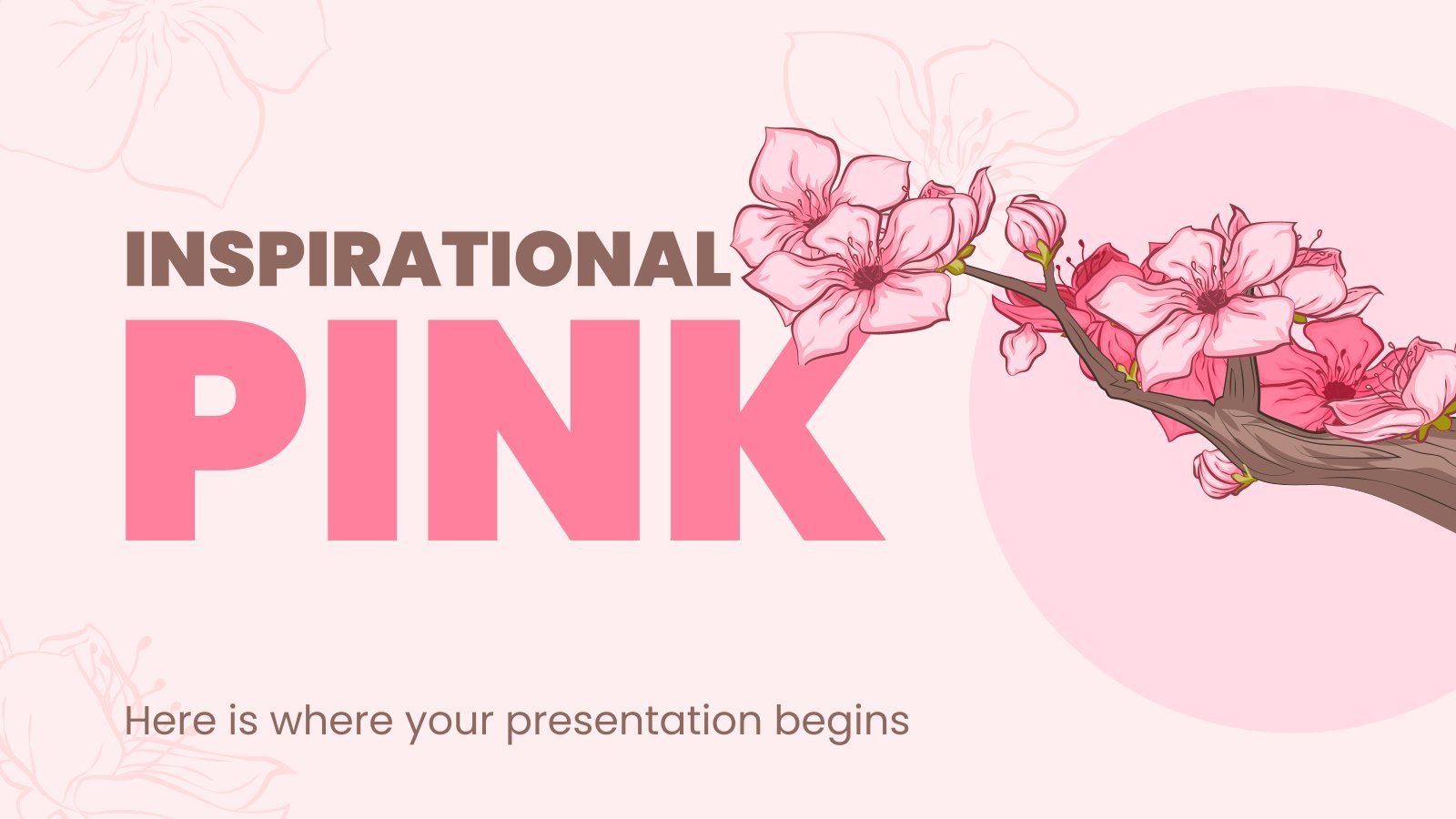
15 templates

64 templates
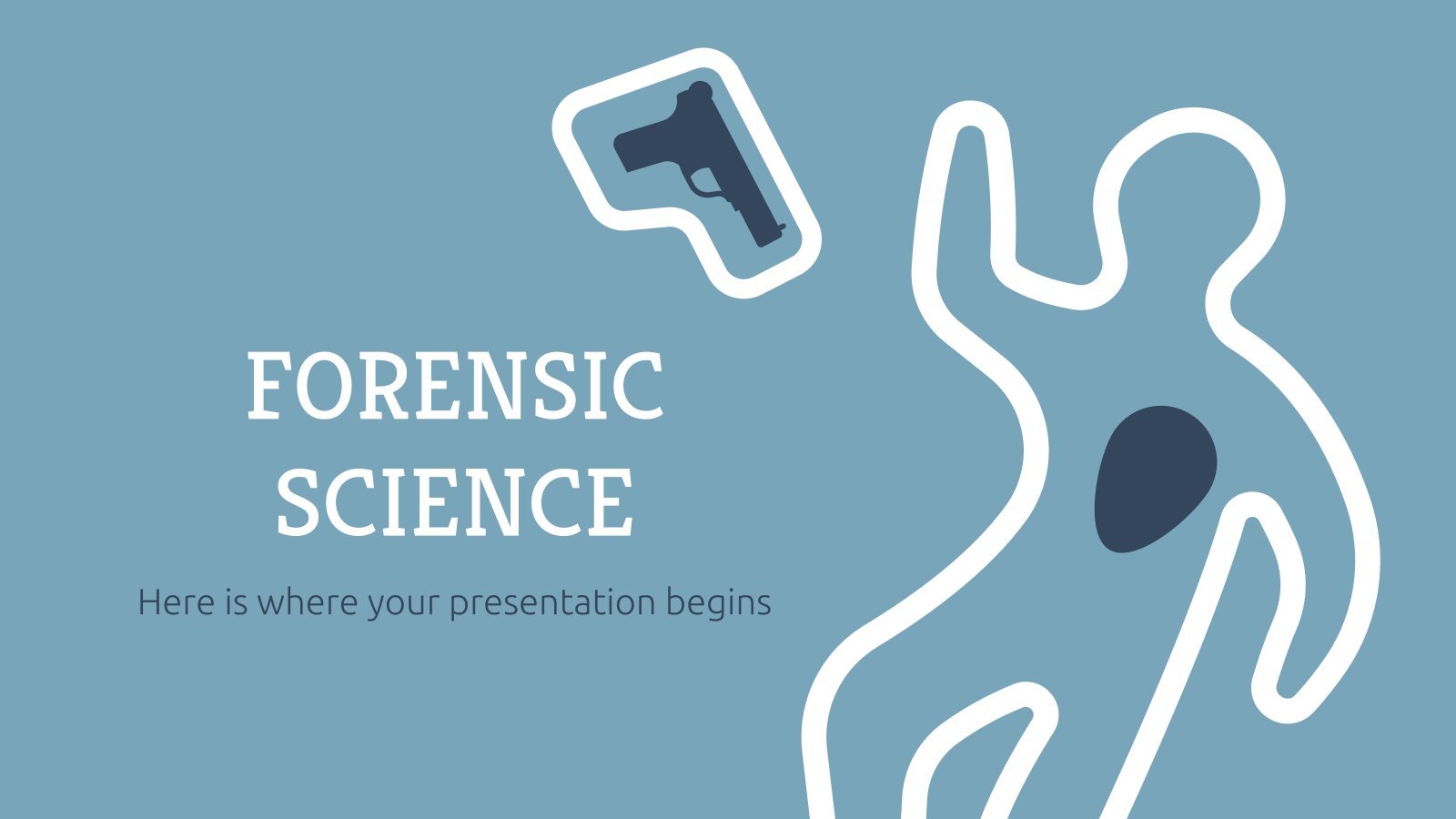
22 templates
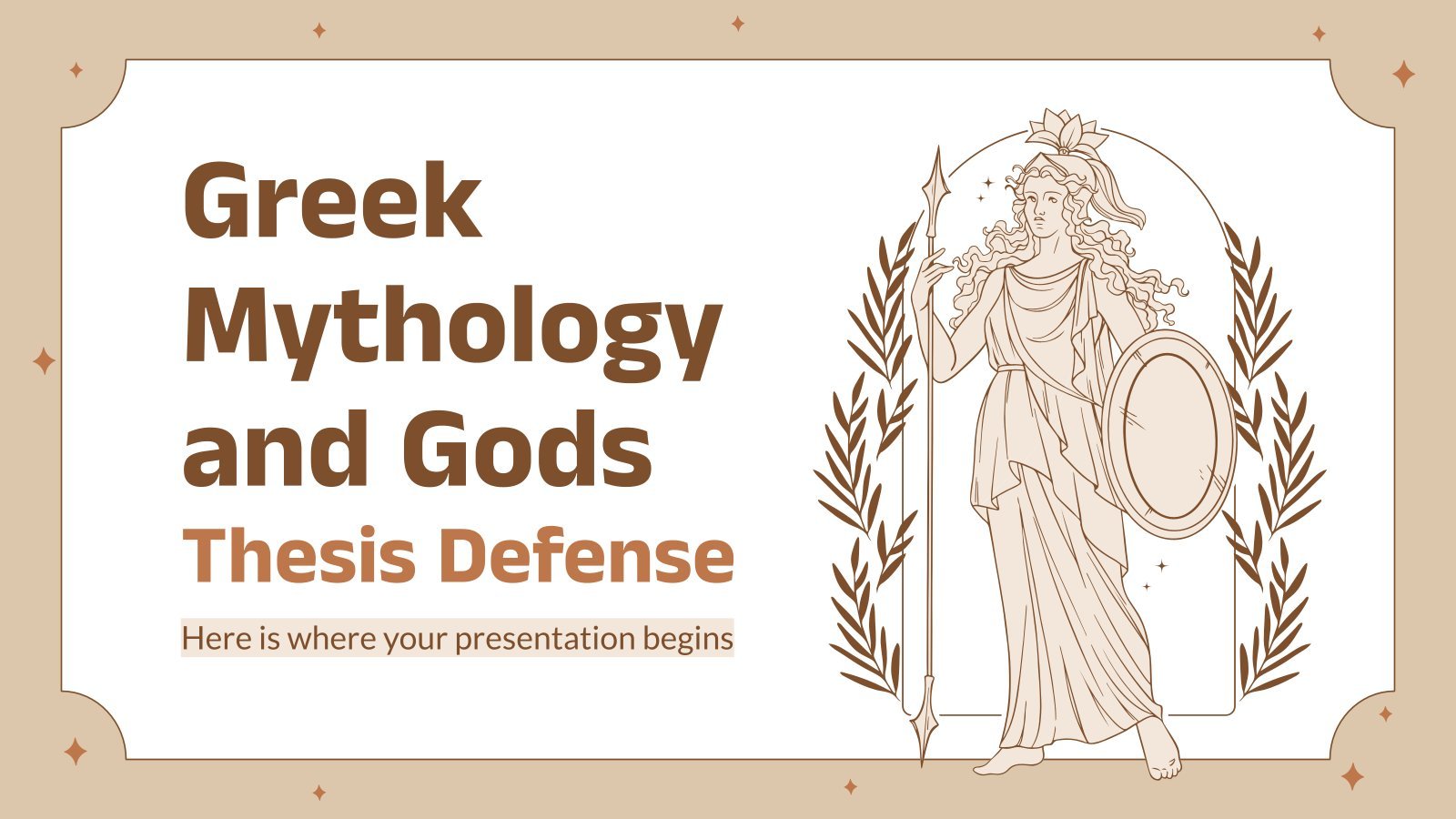
greek mythology
42 templates
Language Presentation templates
No matter what language you speak, we all can agree that a visually appealing presentation can make all the difference. that's why we've curated a selection of google slides and ppt templates that focus on language. from vibrant backgrounds to sleek typography, our editable designs give your presentation that extra flare. save time and impress your audience with a template that fits your language, whether you're presenting a language-learning app or a cultural study. with our templates, your presentation is sure to be a hit.
- Calendar & Weather
- Infographics
- Marketing Plan
- Project Proposal
- Social Media
- Thesis Defense
- Black & White
- Craft & Notebook
- Floral & Plants
- Illustration
- Interactive & Animated
- Professional
- Instagram Post
- Instagram Stories

It seems that you like this template!
Premium template.
Unlock this template and gain unlimited access

Register for free and start downloading now
Vocabulary expansion and context clues - language arts - 8th grade infographics.
Download the Vocabulary Expansion and Context Clues - Language Arts - 8th Grade Infographics presentation for PowerPoint or Google Slides. If you’re looking for a way to motivate and engage students who are undergoing significant physical, social, and emotional development, then you can’t go wrong with an educational template designed...

The Teacher's Role in Reading Practices in Early Childhood Education
Download the The Teacher's Role in Reading Practices in Early Childhood Education presentation for PowerPoint or Google Slides and teach with confidence. Sometimes, teachers need a little bit of help, and there's nothing wrong with that. We're glad to lend you a hand! Since Slidesgo is committed to making education...

Public Speaking - 9th grade
Download the Public Speaking - 9th grade presentation for PowerPoint or Google Slides. High school students are approaching adulthood, and therefore, this template’s design reflects the mature nature of their education. Customize the well-defined sections, integrate multimedia and interactive elements and allow space for research or group projects — the...

Language Arts Subject for High School: Literary Essay
Download the Language Arts Subject for High School: Literary Essay presentation for PowerPoint or Google Slides. High school students are approaching adulthood, and therefore, this template’s design reflects the mature nature of their education. Customize the well-defined sections, integrate multimedia and interactive elements and allow space for research or group...
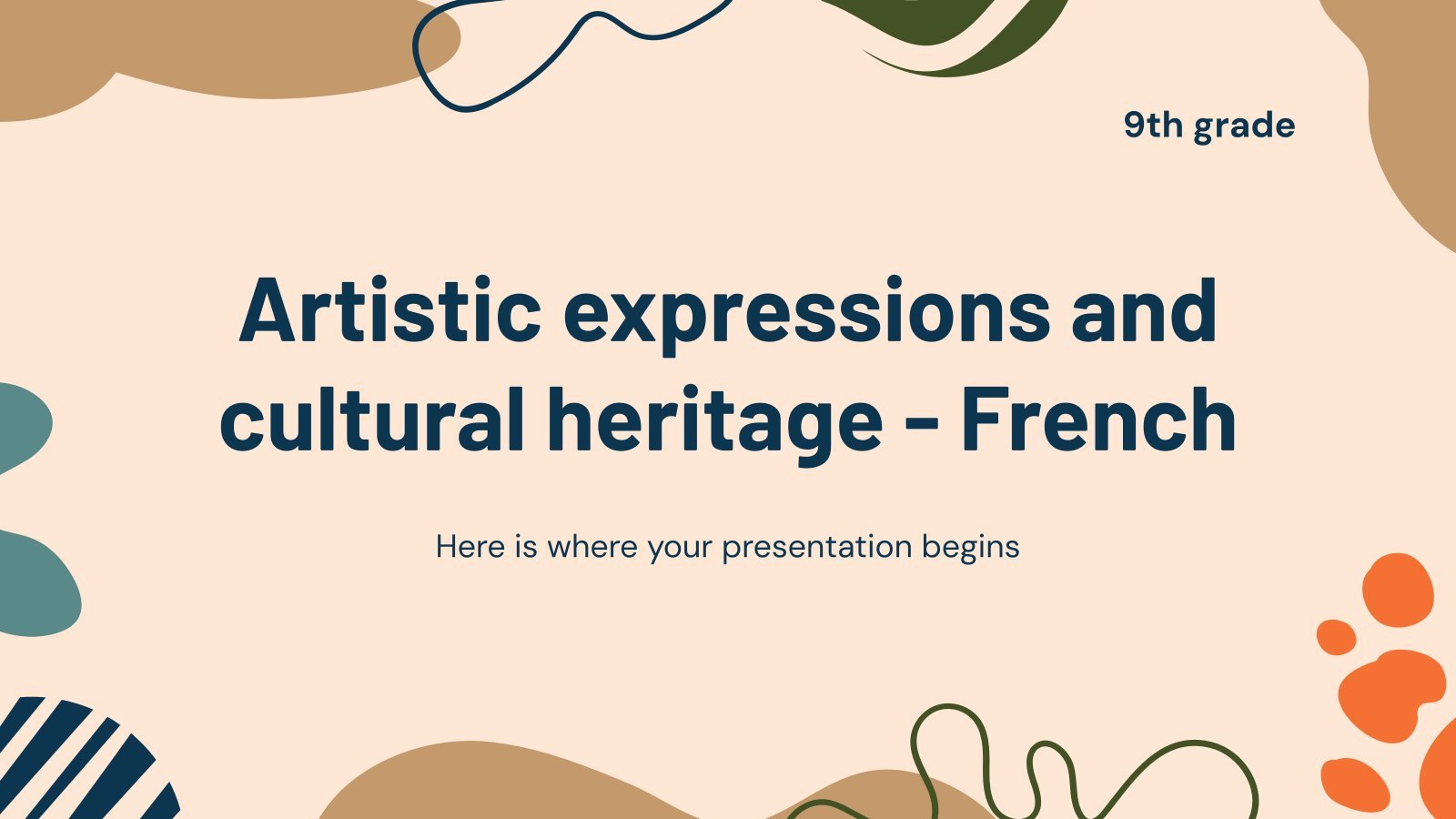
Artistic Expressions and Cultural Heritage - French - 9th Grade
Download the "Artistic Expressions and Cultural Heritage - French - 9th Grade" presentation for PowerPoint or Google Slides. High school students are approaching adulthood, and therefore, this template’s design reflects the mature nature of their education. Customize the well-defined sections, integrate multimedia and interactive elements and allow space for research...

Foreign Language Subject for High School: Speech Shadowing
Download the Foreign Language Subject for High School: Speech Shadowing presentation for PowerPoint or Google Slides. High school students are approaching adulthood, and therefore, this template’s design reflects the mature nature of their education. Customize the well-defined sections, integrate multimedia and interactive elements and allow space for research or group...
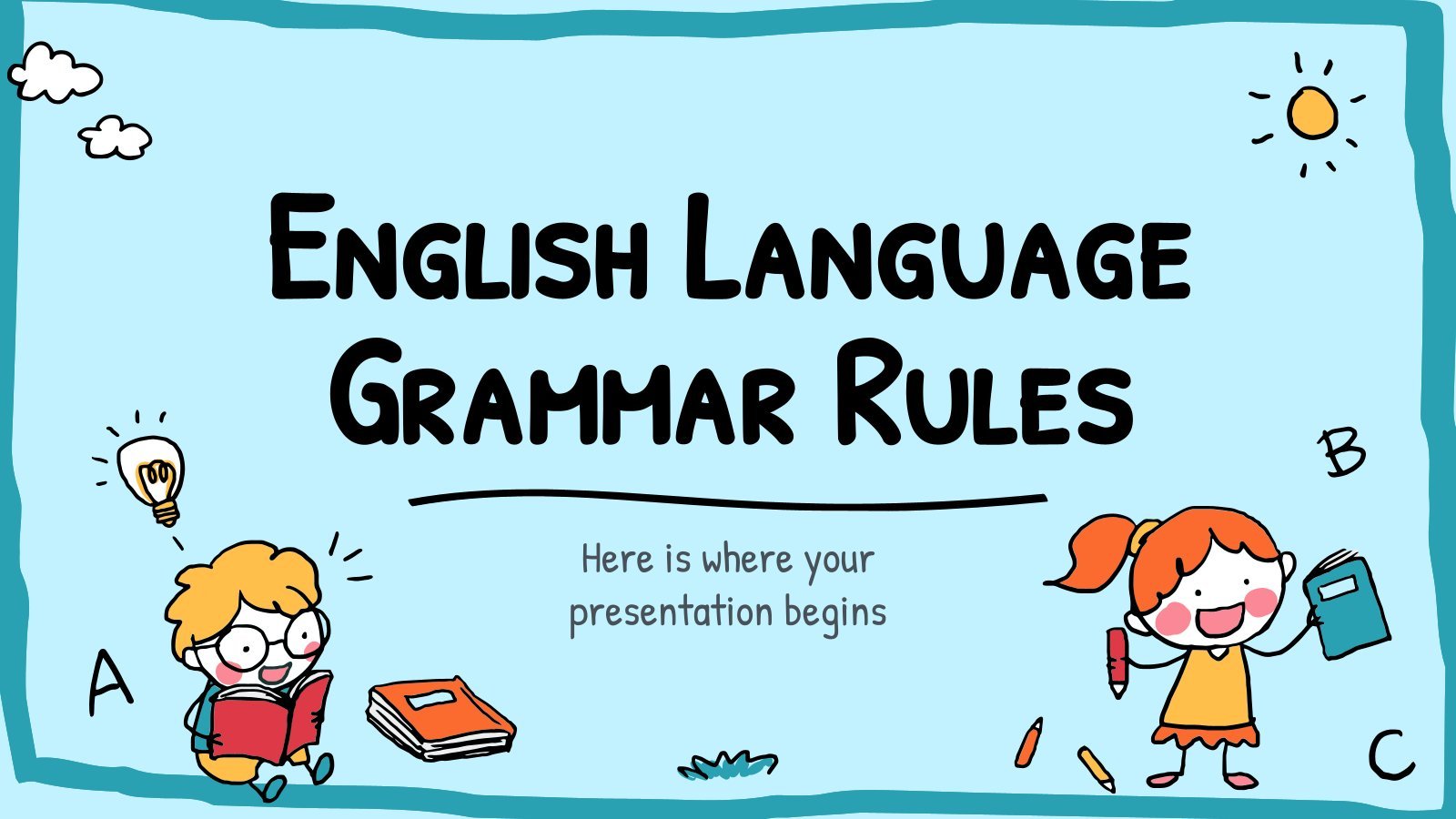
Create your presentation Create personalized presentation content
Writing tone, number of slides, english language grammar rules.
The English language is spoken almost anywhere in the world, making it almost a necessity in everyone's education. Today, we're releasing this kid-friendly template with cute cartoony drawings of kids and many layouts prepared for you to teach some grammar rules. We've added some examples as a starting point. Use...

Language Arts for High School - 9th Grade: Grammar
"Let's review the capitalization rules! Wait, I think the punctuation rules should be mentioned too. Great!" How enthusiastic your students feel before a grammar exam! That's because you've used this template to teach them some theory and concepts in language arts class. It's very creative, it has some patterned backgrounds...
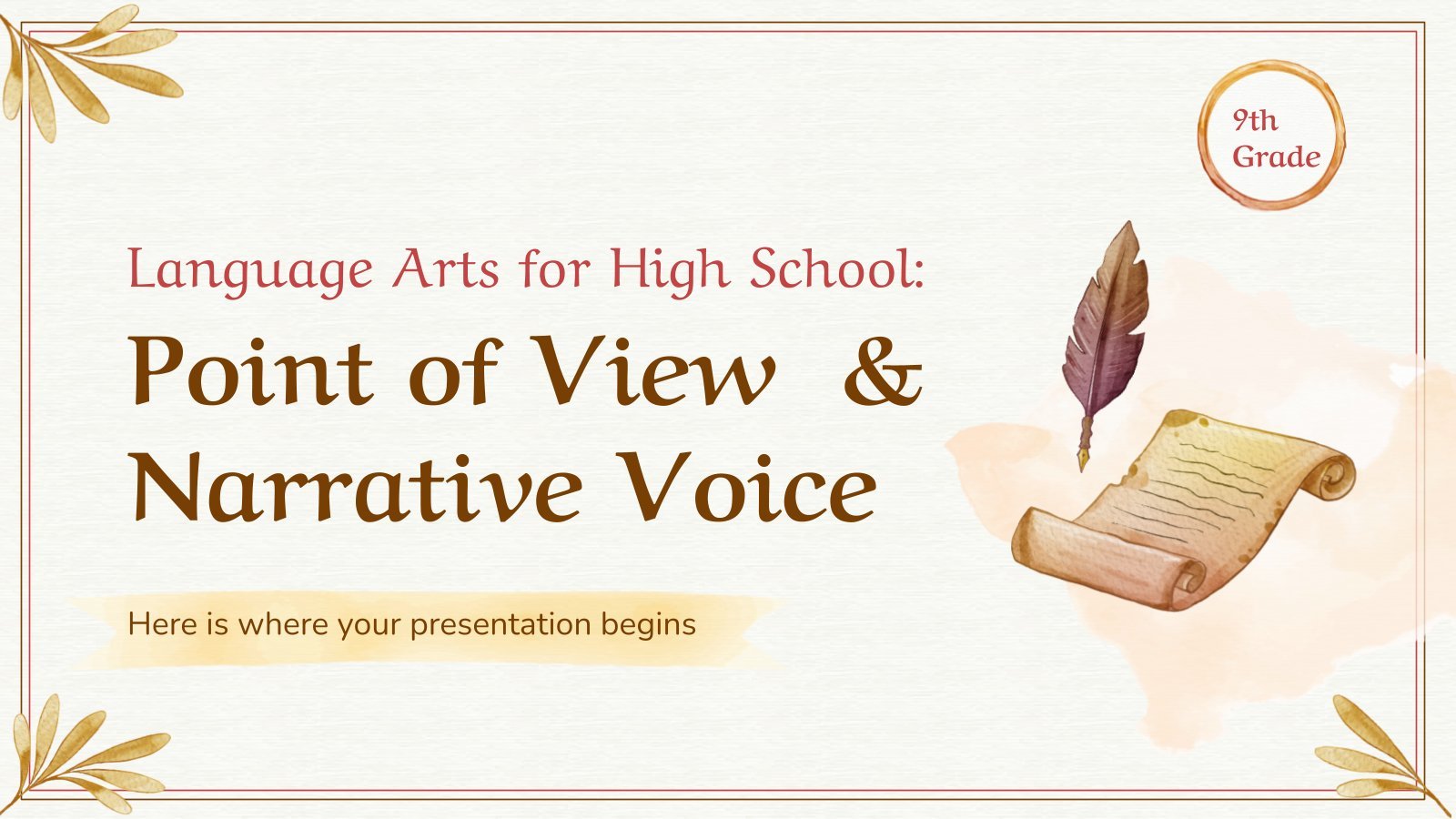
Language Arts for High School - 9th Grade: POV and Narrative Voice
Do you think your students would be able to name how many types of narrators there are and the points of view in a story? Don't worry! Well, if they still don't manage these concepts properly, after a literature class presented with this template, they'll become real experts. And of...

International Mother Language Day
In this globalized world, cultural diversity is, fortunately, much and much more of an accepted reality, so UNESCO announced the Mother Language Day, an annual observance on February 21. So of course Slidesgo had to create a template about it! With cartoony characters and lots of maps on the background,...

Language Arts for Elementary School: Saying "Sorry" in Many Languages
May the different languages of this world not stop you from apologizing when necessary. To err is human, so add "sorry" and its equivalent in other languages to your vocabulary. This template, aimed at kids, is great if you want to teach them about this human act of saying sorry....

Language Arts Subject for Middle School: Historical Fiction
Download the Language Arts Subject for Middle School: Historical Fiction presentation for PowerPoint or Google Slides. If you’re looking for a way to motivate and engage students who are undergoing significant physical, social, and emotional development, then you can’t go wrong with an educational template designed for Middle School by...

Language Arts Activities for Elementary: Homophones
Download the Language Arts Activities for Elementary: Homophones presentation for PowerPoint or Google Slides and easily edit it to fit your own lesson plan! Designed specifically for elementary school education, this eye-catching design features engaging graphics, and age-appropriate fonts; elements that capture the students' attention and make the learning experience...

Foreign Language Subject for High School: Activities to Celebrate National German Language Day
German Language Day is celebrated on September 10th. Share your passion for this language preparing some activities to celebrate it! In order to make the job easier for you, we have prepared this beautiful template full of exercises and German flags that you can use in a DaF lesson. Don’t...

Verb Conjugations Charts Pastel Binder
Download the Verb Conjugations Charts Pastel Binder presentation for PowerPoint or Google Slides. The education sector constantly demands dynamic and effective ways to present information. This template is created with that very purpose in mind. Offering the best resources, it allows educators or students to efficiently manage their presentations and...

Tips and Strats for Studying a Text
Download the Tips and Strats for Studying a Text presentation for PowerPoint or Google Slides. The education sector constantly demands dynamic and effective ways to present information. This template is created with that very purpose in mind. Offering the best resources, it allows educators or students to efficiently manage their...

Happy International Day of Sign Languages
The International Day of Sign Languages is right around the corner (September 23rd) and what better way to celebrate than with a visually stunning presentation? This Google Slides and PowerPoint template is the perfect tool to engage your audience and educate them about the importance of sign language. The hand-drawn...
Language Arts Subject for Middle School: Acrostic Poems Activities
Your mission as a middle school language arts teacher is to stimulate the creativity of your students. We know that your class on acrostic poems is essential and that you want it to be a success. Well, look no further, you have found the perfect template to achieve it. Discover...
- Page 1 of 57
Register for free and start editing online
Pomaka English
Supporting English language learners and educators

Ten recommended TED Talks on language learning
Looking for tips on language learning? Or, looking for useful video resources for your classes?
TED talks can not only be a great source of information on language learning but also a useful resource for teachers looking to develop learner listening and presenting skills.
I have included below ten of my favorite talks on language learning.
As learners, listening to presentations about language learning, you can not only get some useful tips, but also get listening practice at the same time.
When using them as a teacher for class resources, the content would likely be too difficult for beginner learners, but they can be great for intermediate to advanced level learners, particularly in more specialized courses on oral presentation/culture etc. Remember, English subtitles (or even other languages) can be displayed by clicking on the bottom-right icon of the screen.
Continued below
| TED Talk | Comment | |
|---|---|---|
| 1 | Ten ways to have a better conversation – Celeste Headlee (12min) Interesting and very relevant to non-language learners, too. Talks about importance of empathy, listening skills, and an open mind in conversation. Should we really be avoiding sensitive topics like politics? Or have we just lost the ability to share different opinions effectively? | |
| 2 | How to speak so that other people want to listen – Julian Teasure (10min) A focus on the delivery aspects of communication (prosody, voice inflection etc.) so very relevant to speech/oral presentation, although some of the terminology used might be difficult for language learners | |
| 3 | Five ways to listen better – Julian Treasure (8min) Second half of talk introduces more practical techniques for active listening. Processes like RASA (Receive, Appreciate, Summarize, Ask) especially useful for language learners | |
| 4 | Feats of the memory anyone can do – Joshua Foer (20 min). Have trouble remembering people’s names? Very interesting and humorous talk on how we can most effectively memorize new information and how it is a skill that is learnt rather than a natural ability. Content not limited to language learning, and useful and practical info. on how human memory works and the most effective way to memorize things including new words, peoples names etc. | |
| 5 | Four reasons to learn a new language – John McWhorter (10min) With English being increasingly used as a global language, it is effectively argued that there are still numerous benefits to learning other languages. A bit serious in places but insight into strong connections between language, culture, and behavior. |
| TED Talk | Comment | |
|---|---|---|
| 6 | What makes a word real? – Anne Curzan (17min) An interesting look into the world of linguistics, and lexicography (writing dictionaries). Insight on how languages are constantly changing and evolving, reflecting social trends etc. | |
| 7 | Power of Words – Charles Browne (12min) Which words are the most useful for language leaners to learn first? How recent research on corpus linguistics is changing ideas on how foreign language learners should be learning vocabulary | |
| 8 | How language shapes the way we think – Lera Boroditski (14min) An interesting talk arguing the extent to which language influences the way we think (Sapir-Warf hypothesis) and how it combines with culture to affect the way we view the word | |
| 9 | Rapid language hacking – Benny Lewis (18min) Talks about how there is no such thing as a “natural language leaner” and that everyone has the ability to learn a language. Using his own learning experiences, the importance of practical communication skills and real-life practice are emphasized (a great argument for communicative language learning) | |
| 10 | The Secrets of Learning a New Language – Lydia Machova (10min) Talks about four key points that good language learners have in common: 1. Enjoyment 2. Methods (useful techniques) 3. Systems (making regular habits) & 4. Patience |
|
The videos can also be used together with which is a free resource allowing lessons to be created around TED talk videos. Lesson design is easy and resources produced very polished. |
Related links
How can I improve my listening skills?
Do people talk too quickly for you?
Privacy Overview
© Copyright 2024 Pomaka - All rights reserved

- My presentations
Auth with social network:
Download presentation
We think you have liked this presentation. If you wish to download it, please recommend it to your friends in any social system. Share buttons are a little bit lower. Thank you!
Presentation is loading. Please wait.
Language Learning Strategies
Published by Tyler Lloyd Modified over 6 years ago
Similar presentations
Presentation on theme: "Language Learning Strategies"— Presentation transcript:

Cognitive Academic Language Learning Approach

T H A N K Y O U !. Charlie Robinson Charlie

How to Help Struggling Students Become Good Language Learners

Performance Assessment

Approach, Methods, Techniques

Direct Instruction Also called explicit instruction Widely applicable strategy that can be used to teach both concepts and skills Uses teacher explanation.

LG 637 WEEK 2..

Second Language Acquisition

1 Language Learners Strategies: Issues in Classification Andrew D. Cohen University of Minnesota.

Research in Language Learning and Teaching Short introduction to research and its planning.

The CALLA Model in Curriculum Design

DEVELOPING ACADEMIC LANGUAGE AND TEACHING LEARNING STRATEGIES Anna Uhl Chamot Jill Robbins George Washington University.

Section VI: Comprehension Teaching Reading Sourcebook 2 nd edition.

Marjorie Hall Haley, PhD - GMU Chapter 5 Interactive Listening and Reading.

Dr E. Lugo Morales1 6/28/2012. Develop academic vocabulary Read to acquire new information Understand information presented orally Participate in classroom.

Strategies to Accelerate Academic Learning for English Learners

A presentation by Elena Chiaburu

Strides towards Independent Learning in Foreign Language Contexts

A Framework for Inquiry-Based Instruction through

Kathleen Stassen Berger Prepared by Madeleine Lacefield Tattoon, M.A. 1 Part IV Cognitive Development: The School Years Chapter Twelve Building on Theory.
About project
© 2024 SlidePlayer.com Inc. All rights reserved.
Academia.edu no longer supports Internet Explorer.
To browse Academia.edu and the wider internet faster and more securely, please take a few seconds to upgrade your browser .
Enter the email address you signed up with and we'll email you a reset link.
- We're Hiring!
- Help Center

Explaining Second Language Learning

This is the slide presentation on explaining second language learning for master students in Teaching English as a Foreign Language Programme. Department of English Faculty of Letters National University of Laos
Related Papers
The Modern Language Journal
Claudia Gutierrez
Applied Linguistics
This book, a follow-up to the editors’ successful guide to second language (L2) teacher education (Burns and Richards 2009), is a clear and concise introduction to the research and scholarship across 36 topics related to learning English as an L2. Although the title indicates that the focus is on English, because many of the authors discuss L2 learning and second language acquisition (SLA) more generally, the book should find an audience with scholars who are interested in research on learning other languages as well.
Alexandria, VA: TESOL Press. ISBN 978-1-945351-04-4
Michael Lessard-Clouston
Second Language Acquisition Applied to English Language Teaching offers teachers of English language learners an overview of second language acquisition (SLA) theory while allowing readers to reflect on their own classroom practices. It defines SLA, outlines how it helps teachers understand their roles and those of learners in their classes, and introduces major concepts and issues. The book argues that input, output, and interaction are essential for English language learning and teaching, and touches on questions of age, anxiety, and error correction. Finally, SLA Applied to ELT encourages readers to use teaching materials that reflect SLA principles and explains what the field of SLA offers practicing English teachers, including encouragement. The book is written in a straightforward, easy-to read style, complete with reflection questions so that busy teachers can apply what they are reading to their own classroom teaching. As such, it’s a must have for any teacher who wants to understand student learning better so that they can teach their English language students effectively. [Note: The attached file includes the Table of Contents and a sample of Ch. 5.]
Lina Mukhopadhyay
Course Description The course will begin with a historical perspective on English Language Education (also commonly referred to as English Language Teaching) from ancient days of teaching the language like other classical languages as Greek and Latin up to the 21 st century trends. Basic principles and procedures of the most recognized and commonly used approaches and methods for teaching English as a second (or a foreign language) will be presented. These are the Grammar Translation Method, Direct Method, Audio-Lingual Method, Communicative Language Teaching, Content-Based Instruction and other alternative approaches. Each approach or method will be discussed in terms of their theoretical orientation, teaching practices and learning activities designed to reach the specified teaching goals and learning outcomes. Candidates will examine and analyze the teaching methods and compare whether the methods reflect similar or opposing views of language learning principles. Through course readings and sample video lessons, candidates will reflect on what constitutes language use, and the role of teacher and learners in each of the teaching methodologies. The analysis will help them to gain a fuller understanding of the principles and practices behind the choices teachers make regarding particular methods. In all, the course will enable learners to look for the rationale for the different techniques that have been used in the course of language teaching history and learn to critique the practices and materials designed to teach English and many unresolved issues in the domain. The course will not espouse any particular approach to second language teaching but rather present an overview of the many approaches to teaching second and foreign languages.
Syeda Bukhari
Mark Feng Teng
Firda Bachmid
Language and Education
Nicole Ziegler
Stephen Ryan
Loading Preview
Sorry, preview is currently unavailable. You can download the paper by clicking the button above.
RELATED PAPERS
irene fernandez
Fasya Ramadhan
Panduan Lengkap Jamur
tessema demsie
Journal for research scholars and professionals of English language teaching
Edward Owusu
Sarah Jourdain
Education and Human Development
ebabu adugna
Emilia Ortega
The Routledge Handbook of Instructed Second Language Acquisition
Lorena Valmori
SMART M O V E S J O U R N A L IJELLH
Abla BENBELLAL
Undergraduate Research Journal at the University of Northern Colorado
dulce maria moreno herrera
Arizio Sweeting
Southern Conference on Language Teaching
Sue Barry , Robert Terry
Maggie Broner
Behavioral and Brain Sciences
Robert Bley-Vroman
lutfan adli
MaryAnn Christison
International Journal of English Studies
International Journal of English Studies (IJES) , Elsa Tragant
Taghreed M Al-Saraj
Amalia Oyarzún
Dr.Jeya Santhi.V, PGDELT, Ph.D., PGCTE.
RELATED TOPICS
- We're Hiring!
- Help Center
- Find new research papers in:
- Health Sciences
- Earth Sciences
- Cognitive Science
- Mathematics
- Computer Science
- Academia ©2024
A collection of TED Talks (and more) on the topic of Language.
Video playlists about Language

The pursuit of curiosity and understanding
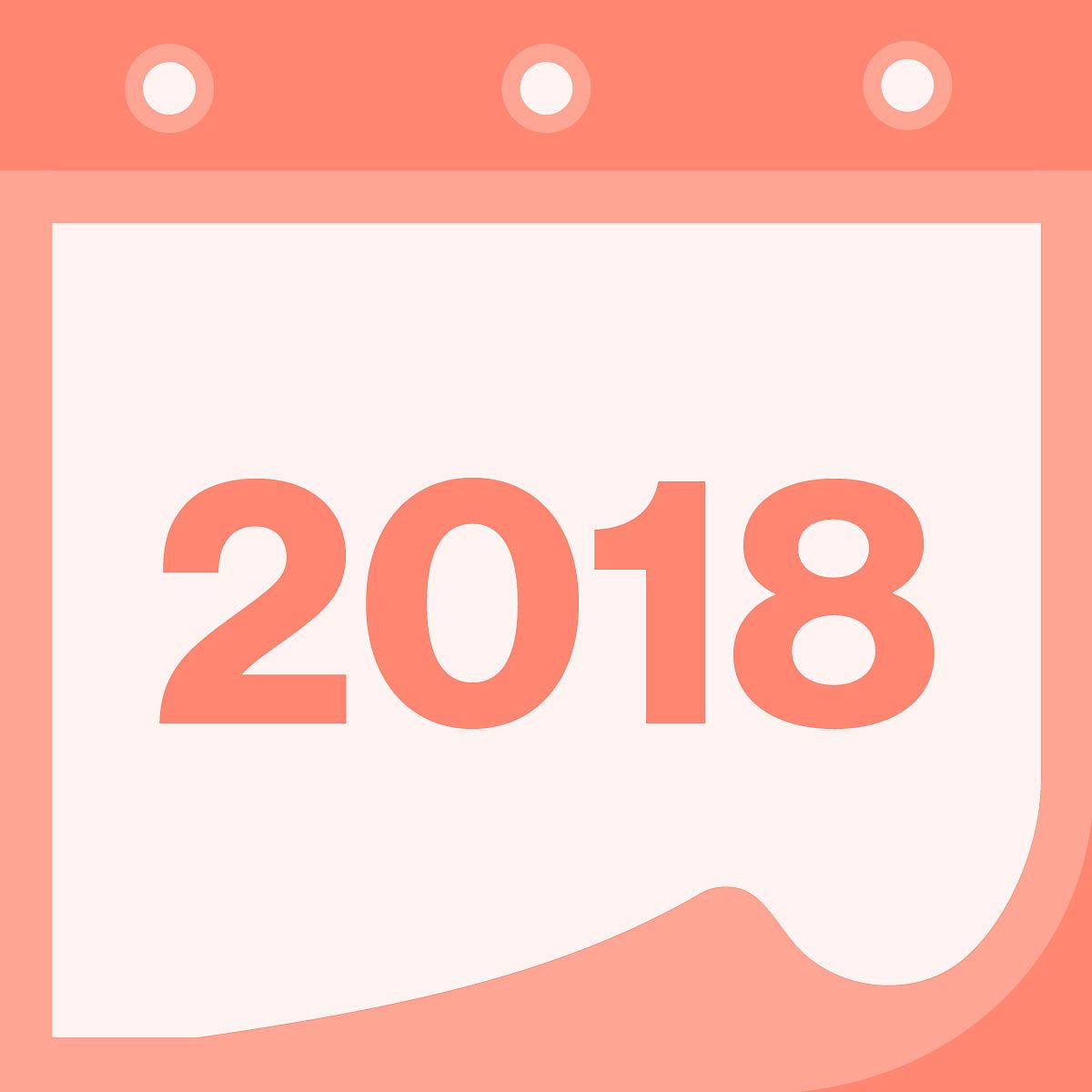
The most popular TED Talks of 2018

The most translated TED Talks

Great TED Talks for language practice
Talks about language.

3 ideas for communicating across the political divide

The secret behind how Chinese characters work

Courage, the most important virtue

Why don't "tough" and "dough" rhyme?

Welcome to the world of audio computers

Why was the Rosetta Stone so important?

A meditation on Rumi and the power of poetry

Why AI is humanity's mirror — and what we can learn from it

What's your leadership language?
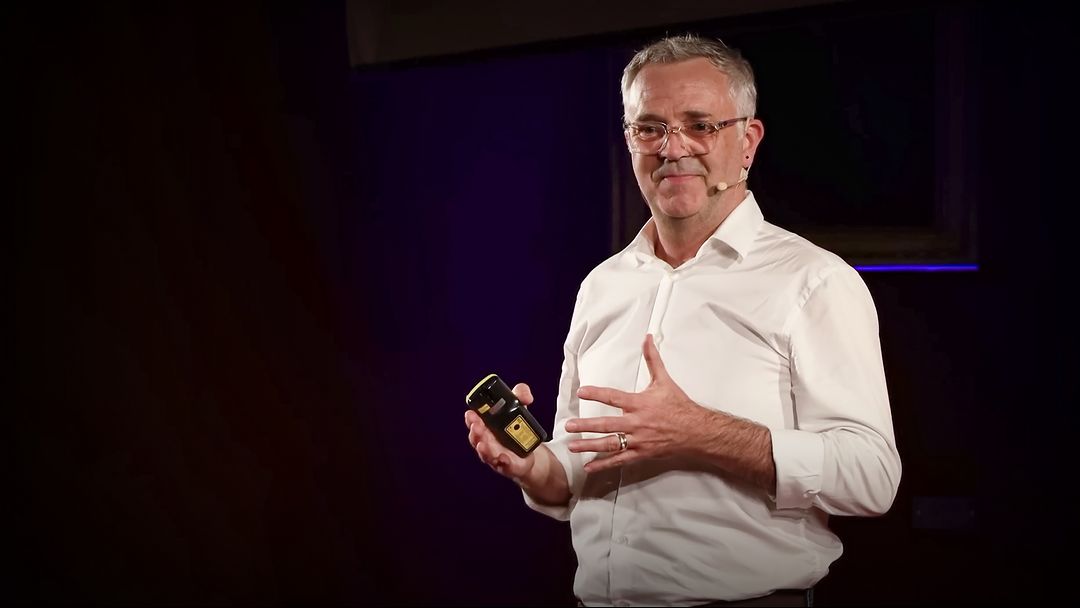
Why you should embrace mediocrity

How AI is learning what it means to be human

How AI can keep disappearing languages alive
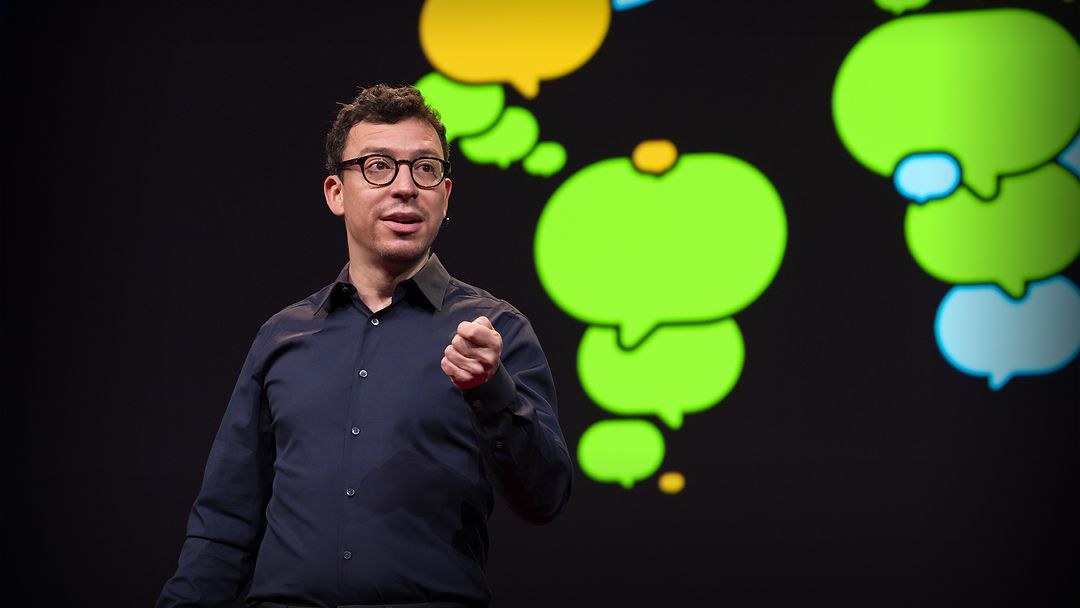
How to make learning as addictive as social media


Could an orca give a TED Talk?

Can we recreate the voice of a 3,000-year-old mummy?

The poetry of everyday language
Exclusive articles about language, when speaking a new language, what matters most is your attitude — not your accuracy, get more from wikipedia — try reading about a subject in a different language, meet the person who created dothraki and valyrian for game of thrones — and learn how “khaleesi” should have been said.
Language Learning PowerPoint Template
- Education , Google Slides , PowerPoint , Templates
The free Language Learning PowerPoint Template has a beige background containing four dictionaries. Therefore, the template is suitable when you have to give a presentation on popular foreign languages, language learning methods and apps, online courses, etc. It is compatible with various topics such as grammar, vocabulary, reading, English language , etc. The slides are really easy to use, just choose the layout that fits your content. You can also find similar templates in our Education Category .
How to Use Language Learning PPT Backgrounds?
Now, you can download either the presentation template in the POTX format or duplicate the Google Slides template. Both formats are very easy to use. Just don’t forget to install the fonts. If you want to impress your audience, read some of our blog articles that will help you to improve your presentation skills.
In addition, if you like this free widescreen PowerPoint template you can share your thoughts by replying to this post. Do not forget to follow our social media where you can get links to exclusive stories and templates. Visit our Facebook , and Pinterest pages and stay tuned to the latest news and trends from the world of presenting.
Template Preview
Moreover, below you can see some of the slides this PPT template contains.
- Beige , Book , Books , Education , English , Knowledge , Language , School
Dinosaurus PowerPoint Template
Max verstappen powerpoint template, red bull f1 team powerpoint template, selena gomez powerpoint template, cleveland cavaliers powerpoint template, ronaldo powerpoint template.
Need your decks to shine but short on time? Let us handle all for you!
We create stunning presentations and templates that will captivate your audience.
Build slides 4x faster and save up to 10 hours per week!
Say goodbye to slide shame now with our premium presentation templates.
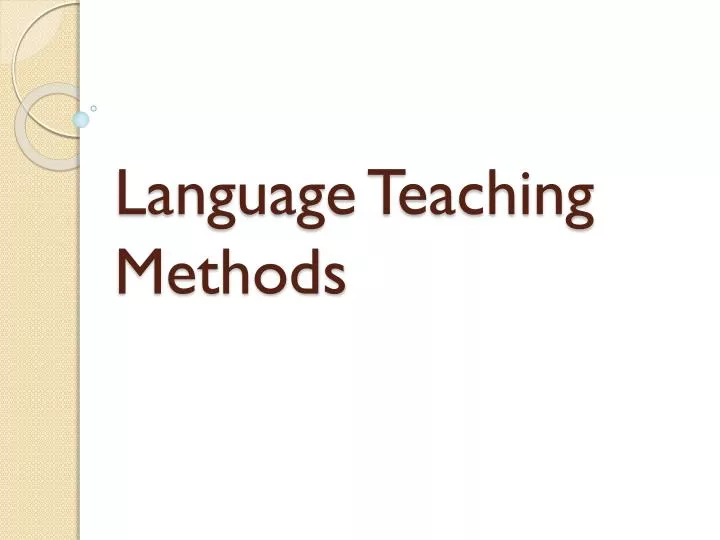
Language Teaching Methods
Jul 19, 2014
4.81k likes | 12.19k Views
Language Teaching Methods. THE DIFFERENCE BETWEEN AN APPROACH AND A METHOD (AND A TECHNIQUE):.
Share Presentation
- language learning
- second language learning
- san jose state university
- adult learners
- first language learning

Presentation Transcript
THE DIFFERENCE BETWEEN AN APPROACH AND A METHOD (AND A TECHNIQUE): • An approach to language teaching is something that reflects a certain model or theory. This term is the broadest of the three. By method we mean a system that spells out a set of procedures or activities that have been chosen by the teacher in order to reach the course objectives. A technique is a classroom device or activity and thus represents the narrowest term of the three. Some techniques are widely used and found in many methods (imitation, repetition) and others are specific to a given method.
In other words if there is a way to do something, you need to consider how to do it. This is your approach – consideration of how it should be done. When you have decided on how to do it, your method or means is what you use to do it.
1) The Grammar Translation :Method • A number of methods and techniques have evolved for the teaching of English and also other foreign languages in the recent past, yet this method is still in use. It maintains the mother tongue of the learner as the reference particularly in the process of learning the second/foreign languages. • In applied linguistics, the grammar translation method is a foreign language teaching method derived from the classical (sometimes called traditional) method of teaching Greek and Latin. The method requires students to translate whole texts word for word and memorize numerous grammatical rules and exceptions as well as enormous vocabulary lists. The goal of this method is to be able to read and translate literary masterpieces and classics.
Method: • Classes were conducted in the native language. • A chapter in a distinctive textbook of this method would begin with a massive bilingual vocabulary list. • Grammar points would come directly from the texts and be presented contextually in the textbook, to be explained elaborately by the instructor. Grammar thus provided the rules for assembling words into sentences. The method emphasizes the study of grammar through deduction that is through the study of the rules of grammar. • Tedious translation and grammar drills would be used to exercise and strengthen the knowledge without much attention to content. Sentences would be deconstructed and translated. Eventually, entire texts would be translated from the target language into the native language and tests would often ask students to replicate classical texts in the target language. • Very little attention was placed on pronunciation or any communicative aspects of the language. • The skill exercised was reading, and then only in the context of translation.
2. The Direct method: • The direct method was an answer to the dissatisfaction with the older grammar translation method. There was an attempt to set up conditions that imitate mother tongue acquisition, which is why the beginnings of these attempts were called the natural method. • The direct method of teaching foreign languages, sometimes called the natural method, refrains from using the learners' native language and uses only the target language. It was established in Germany and France around 1900.
:Principles of the direct method are • teaching vocabulary through pantomiming, real-life objects and other visual materials. • teaching grammar by using an inductive approach (i.e. having learners find out rules through the presentation of adequate linguistic forms in the target language). • centrality of spoken language (including a native-like pronunciation) • focus on question-answer patterns teacher-centering.
Only everyday vocabulary and sentences are taught during the initial phase; grammar, reading and writing are introduced in intermediate phase. • Concrete vocabulary is taught through demonstration, objects, and pictures; abstract vocabulary is taught by association of ideas. • Both speech and listening comprehensions are taught. • Correct pronunciation and grammar are emphasized. • Student should be speaking at least 80% of the time during the lesson.
3) The Audio-lingual method • The audio-lingual method was widely used in the United States and other countries in the 1950's and 1960's. It is still used in some programs today.
Principles of this method: • language learning is habit-formation • mistakes are bad and should be avoided, as they make bad habits • language skills are learned more effectively if they are presented orally first, then in written form • analogy (similarity) is a better foundation for language learning than analysis • the meanings of words can be learned only in a linguistic and cultural context • Students should 'over learn,' i.e. learn to answer automatically without stopping to think. • The learning of a foreign language should be the same as the acquisition of the native language.
Drills and pattern practice are typical of the Audio-lingual method. Some of these include: • 1. Repetition: Students are asked to listen carefully to the teacher's model, and then they have to repeat and attempt to mimic the model as accurately and as quickly as possible. • 2. Inflection: Where one word in a sentence appears in another form when repeated e.g. Teacher: I ate the sandwich. Student: I ate the sandwiches • 3. Replacement: Where one word is replaced by another, e.g. Teacher: He bought the car for half-price. Student: He bought it for half-price. • 4. Restatement: The student re-phrases an utterance, e.g. Teacher: Tell me not to smoke so often. Student: Don't smoke so often!
4) Suggestopedia • Often considered to be the strangest of the so-called "humanistic approaches". Suggestopedia is a teaching method which is based on a modern understanding of how the human brain works and how we learn most effectively. It was developed by the Bulgarian doctor and psychotherapist GeorgiLozanov. The term 'Suggestopedia', is derived from suggestion and pedagogy. Suggestopedia was originally applied mainly in foreign language teaching, and it is often claimed that it can teach languages approximately three times as quickly as conventional methods.
Four Stages of Suggestopedia: • PresentationA preparatory stage in which students are helped to relax and move into a positive frame of mind, with the feeling that the learning is going to be easy and fun. • First Concert - "Active Concert"This involves the active presentation of the material to be learnt. For example, in a foreign language course there might be the dramatic reading of a piece of text, accompanied by classical music. • Second Concert - "Passive Review"The students are now invited to relax and listen to some Baroque music, with the text being read very quietly in the background. The music is specially selected to bring the students into the optimum mental state for the effortless acquisition of the material. • PracticeThe use of a range of games, puzzles, etc. to review and consolidate the learning.
5) The Silent Way • The Silent Way is a language teaching method created by Caleb Gattegno that makes extensive use of silence as a teaching technique. It was first introduced in Gattegno's book Teaching Foreign Languages in Schools: The Silent Way in 1972.
:Aims and goals • The general goal of the Silent Way is to help beginning-level students gain basic fluency in the target language, with the ultimate aim being near-native language proficiency and good pronunciation. An important part of this ability is being able to use the language for self-expression; students should be able to express their thoughts, feelings, and needs in the target language. In order to help them achieve this, teachers emphasize self-reliance.
Principles of the Silent Way: • Teachers should concentrate on how students learn, not on how to teach • Imitation and drill are not the primary means by which students learn • Learning consists of trial and error, deliberate experimentation, and revising conclusions • In learning, learners draw on everything that they already know, especially their native language • The teacher must not interfere with the learning process
6) Total Physical Response (TPR) • Total Physical Response is a language learning method based on the coordination of speech and action. It was developed by James Asher, a professor of psychology at San Jose State University, California.
The principles of TPR: • Second language learning is parallel to first language learning and should reflect the same naturalistic processes • Listening should develop before speaking • Children respond physically to spoken language, and adult learners learn better if they do that too • Once listening comprehension has been developed, speech develops naturally and effortlessly out of it. • Adults should use right-brain motor activities, while the left hemisphere watches and learns • Delaying speech reduces stress.
Objectives of TPR: • Teaching oral proficiency at a beginning level • Using comprehension as a means to speaking • Using action-based drills in the imperative form
7) The Natural Approach: • The Natural Approach was developed by Tracy Terrell and Stephen Krashen, starting in 1977. It came to have a wide influence in language teaching in the United States and around the world.
Principles of The Natural Approach: • Language acquisition (an unconscious process developed through using language meaningfully) is different from language learning (consciously learning or discovering rules about a language) and language acquisition is the only way competence in a second language occurs. (The acquisition/learning hypothesis) • Conscious learning operates only as a monitor or editor that checks or repairs the output of what has been acquired. (The monitor hypothesis) • Grammatical structures are acquired in a predictable order and it does little good to try to learn them in another order.(The natural order hypothesis). • People acquire language best from messages that are just slightly beyond their current competence. (The input hypothesis) • The learner's emotional state can act as a filter that impedes or blocks input necessary to acquisition. (The affective filter hypothesis)
8) Communicative Approach: • Communicative language teaching (CLT) is an approach to the teaching of second and foreign languages that emphasizes interaction as both the means and the ultimate goal of learning a language. It is also referred to as “communicative approach to the teaching of foreign languages” or simply the “communicative approach”. • New syllabi took into account needs of different pupils. Traditional academic syllabi had assumed learner's goal was in-depth mastery of target language. But for less academic pupil a more immediate 'pay-off' was necessary, in terms of usefulness for practical purposes.
Principles of CLT: • A teacher’s main role is a facilitator and monitor rather than leading the class. • Lessons are usually topic or theme based, with the target grammar “hidden” in the context e.g. a job interview (using the Present Perfect tense.) • Lessons are built round situations/functions practical and authentic in the real world e.g. asking for information, complaining, apologizing, job interviews, telephoning. • Activities set by the teacher have relevance and purpose to real life situations – students can see the direct benefit of learning • Emphasis on engaging learners in more useful and authentic language rather than repetitive phrases or grammar patterns
Emphasis on communication and meaning rather than accuracy. Being understood takes precedence over correct grammar. The fine tuning of grammar comes later. • Communicative competence is the desired goal. i.e. being able to survive, converse and be understood in the language. • Emphasis is put on correct pronunciation and choral (group) and individual drilling is used • Authentic listening and reading texts are used more often, rather than artificial texts simply produced to feature the target language • Use of songs and games are encouraged and provide a natural environment to promote language and enhance correct pronunciation • Feedback and correction is usually given by the teacher after tasks have been completed, rather than at the point of error, thus interrupting the flow
- More by User
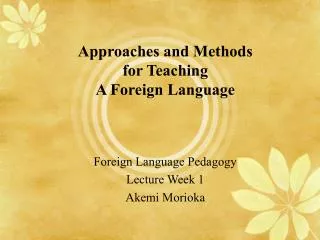
Approaches and Methods for Teaching A Foreign Language
Approaches and Methods for Teaching A Foreign Language. Foreign Language Pedagogy Lecture Week 1 Akemi Morioka. Methods/Approaches Introduced in the Video. Audiolintual Method (ALM) The Natural Approach Community Language Learning (CLL) Total Physical Response (TPR) Suggestopedia
2.45k views • 7 slides

Teaching a foreign language: approaches, methods and techniques
Teaching a foreign language: approaches, methods and techniques. English Pre-service education Valeska Souza.
3.16k views • 13 slides
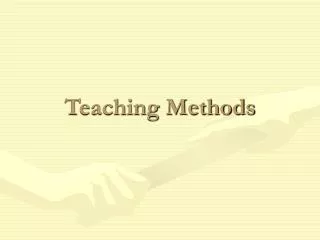
Teaching Methods
Teaching Methods. Methods. Management Education MBA – Regular post graduation course MBA – Part time executive development MBA – Distance learning courses Management Development Formal off-the-job development Formal on-the-job development Informal development. Methods.
1.68k views • 50 slides
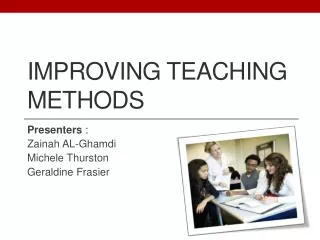
IMPROVING TEACHING Methods
IMPROVING TEACHING Methods . Presenters : Zainah AL-Ghamdi Michele Thurston Geraldine Frasier . Workshop Time Table. Objectives: K) Staff will be able to identify teaching strategies that can be used in clinical and non- clinical area.
1.1k views • 58 slides

METHODS OF TEACHING
Just like this beautiful picture is needed to make this PPT interesting and attractive, different techniques in teaching are needed to do the same for an effective teaching learning process. METHODS OF TEACHING. A. Dramatization method.
2.59k views • 21 slides
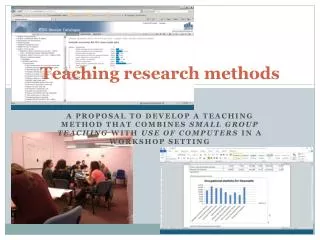
Teaching research methods
Teaching research methods. a proposal to develop a teaching method that combines small group teaching with use of computers in a workshop setting. The problem: research-oriented teaching.
354 views • 6 slides
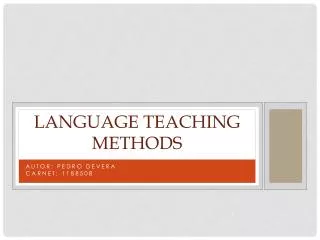
LANGUAGE TEACHING METHODS
LANGUAGE TEACHING METHODS. Autor: pedro devera Carnet: 1188508. Communicative language teaching. THEORETICAL BACKGROUND: _ CLT starts from a theory of language as communication. The goal of language teaching is to develop what Hymes (1972) referred to as "communicative competence.".
857 views • 12 slides
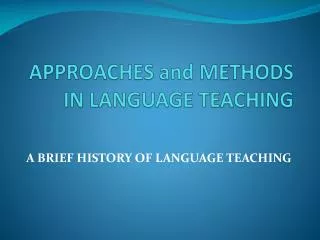
APPROACHES and METHODS IN LANGUAGE TEACHING
APPROACHES and METHODS IN LANGUAGE TEACHING. A BRIEF HISTORY OF LANGUAGE TEACHING. A BRIEF HISTORY OF LANGUAGE TEACHING. Foreign language teaching- an important issue 60 percent of the world population is multilingual
1.3k views • 12 slides

Teaching Methods. Factors influencing math abilities. Psychological factors such as intellectual abilities, cognitive abilities (including perception/memory/working memory etc.) and behavioral factors such as distractibility
729 views • 9 slides

Teaching Methods. Zhong Caishun [email protected] 13699529035. What is the conceptual structure of a teaching method? What are some of the major methods witnessed in the history of language teaching. Questions on teaching a language. Approach, method, technique.
2.24k views • 88 slides
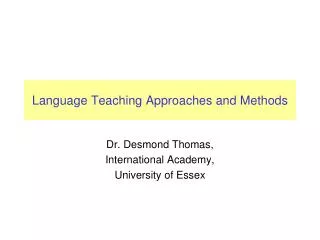
Language Teaching Approaches and Methods
Language Teaching Approaches and Methods. Dr. Desmond Thomas, International Academy, University of Essex. Why do people learn English?. Communication with native speakers Work Career prospects Academic study Travel Access to information Access to literature and culture Prestige?.
1.2k views • 10 slides

Methods & Approaches in Language Teaching (1)
Methods & Approaches in Language Teaching (1). Zhang Lu Shanghai Normal University. Task 1. Discuss in the group of four, what do you think are the differences between the concepts of method and approach?.
1.44k views • 12 slides

Language Teaching Methods. What is a method?. Approach: language description, learning theory Design: objectives, syllabus, activities, roles of teachers/learners/materials Procedure: classroom application (Richards and Rodgers, 2001: Ch. 2)
642 views • 9 slides

Teaching methods
BioMedical Engineering Technische Universiteit Eindhoven in collaboration with Universiteit Maastricht. The first and only 5-year BME programme in Europe leading to a Master degree, starting from the freshman year start: 1997. Teaching methods. Courses Design Centred Learning (DCL).
423 views • 25 slides
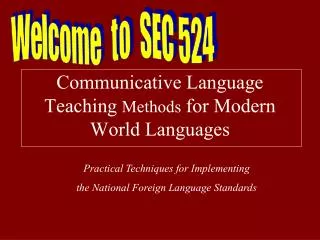
Communicative Language Teaching Methods for Modern World Languages
W e l c o m e t o S E C 5 2 4. Communicative Language Teaching Methods for Modern World Languages. Practical Techniques for Implementing the National Foreign Language Standards. Find Someone Who …
894 views • 58 slides
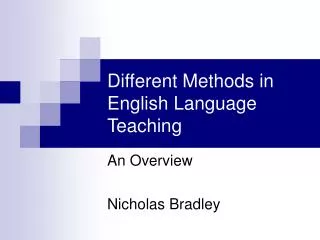
Different Methods in English Language Teaching
Different Methods in English Language Teaching. An Overview Nicholas Bradley. The Japanese EFL Context. Take 5 minutes – think of some of the contextual features of Japanese EFL classes. Typical student characteristics / educational norms / classrooms / and so on…….
841 views • 28 slides

presentation made by teachers
3.41k views • 39 slides

Teaching learning methods
Teaching learning methods. Rakesh Biswas MD, Professor, Department of Medicine, People's College of Medical Sciences, Bhopal, India, Medical education workshop People’s College of Medical Sciences 21 st October 2008.
1.91k views • 27 slides

Teaching Methods. Chapters 7 and 8 Instructors and Their Jobs and additional resources. Communication Skills. Elements of communication Communicator Ability to select and use meaningful symbols Attitudes toward self, subject, and receivers Wealth of current, accurate, and stimulating info
796 views • 27 slides

Teaching Methods. E-Learning. We think too much about effective methods of teaching and not enough about effective methods of learning. IMPORTANCE OF EDUCATION. All religions attaches great importance to knowledge and education.
12.21k views • 37 slides
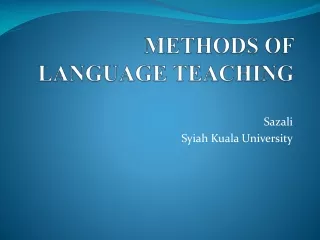
METHODS OF LANGUAGE TEACHING
METHODS OF LANGUAGE TEACHING. Sazali Syiah Kuala University. Methods of language teaching include: 1) Grammar-translation approach 2) Direct approach 3) Audiolingual method 4) Community language learning 5) Suggestopedia 6) The silent way 7) Total physical response
882 views • 25 slides
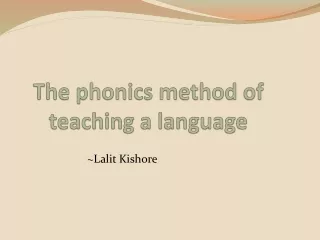
The Phonics Methods of Teaching Language
The power point presentation "The Phonics Methods of Teaching Language' is meant for teachers, educators and researchers in language teaching.
546 views • 12 slides
384 Learning English ESL powerpoints
Language of Presentations
Simplicity and clarity.
If you want your audience to understand your message, your language must be simple and clear .
Use short words and short sentences.
Do not use jargon, unless you are certain that your audience understands it.
In general, talk about concrete facts rather than abstract ideas.
Use active verbs instead of passive verbs. Active verbs are much easier to understand. They are much more powerful. Consider these two sentences, which say the same thing:
- Toyota sold nine million vehicles last year.
- Nine million vehicles were sold by Toyota last year.
Which is easier to understand? Which is more immediate? Which is more powerful ? #1 is active and #2 is passive.
Signposting

During your introduction, you should tell your audience what the structure of your presentation will be. You might say something like this:
"I'll start by describing the current position in Europe. Then I'll move on to some of the achievements we've made in Asia. After that I'll consider the opportunities we see for further expansion in Africa. Lastly, I'll quickly recap before concluding with some recommendations."
A member of the audience can now visualize your presentation like this:
| ) | |
He will keep this image in his head during the presentation. He may even write it down. And throughout your presentation, you will put up signposts telling him which point you have reached and where you are going now. When you finish Europe and want to start Asia, you might say:
"That's all I have to say about Europe. Let's turn now to Asia."
When you have finished Africa and want to sum up, you might say:
"Well, we've looked at the three continents Europe, Asia and Africa. I'd like to sum up now."
And when you finish summing up and want to give your recommendations, you might say:
"What does all this mean for us? Well, firstly I recommend..."
The table below lists useful expressions that you can use to signpost the various parts of your presentation.
| Signposting | |
|---|---|
| Function | Language |
| Introducing the subject | |
| Finishing one subject... | |
| ...and starting another | |
| Analysing a point and giving recommendations | |
| Giving an example | |
| Dealing with questions | |
| Summarising and concluding | |
| Ordering | |
- Preferences

Language Learning - PowerPoint PPT Presentation

Language Learning
Next why is it important to study languages improving foreign language learning the lisbon strategy & language learning our personal suggestion about foreign ... – powerpoint ppt presentation.
- Why is it important to study languages?
- Improving Foreign Language Learning
- The Lisbon Strategy Language Learning
- Our personal suggestion about foreign Language Learning
- European Projects connected to Language Learning
- Language Learning and the EU
- Efficiency and consolidation of the single market
- Competition at a global level with countries such as China or India
- Partnership with universities in growth and job
- Develops a dynamic and knowledge based economy
- Increases the number of jobs
- Improves the quality of jobs
- Promotes understanding and tolerance of other cultures
- schools and training institutions may adopt a holistic approach to the teaching of language
- appropriate connections between the teaching of the mother tongue, foreign languages, the language of instruction, and the languages of migrant communities policies will help children to develop their communicative abilities
- receptive multilingualism should be developed
- Common European profile for language teacher education
- Language learning for learners with special education needs
- European agency for linguistic diversity and language learning
- Effective ways for promoting language learning
- European language certification systems
- Socrates and Leonardo da Vinci programmes have stimulated the development of many useful tools for teaching and learning foreign languages
- eLearning approaches based on Internet-facilitated school twinning and on the pedagogical use of ICTs for learning
- They are called upon to exemplify the European values of openness to others, tolerance of differences, and willingness to communicate
- more work is required to make sure that the results of research into language pedagogy, and the evidence of good practice and successful innovation, are disseminated to the people who can make use of them.
- to date, the key role played by language teacher trainers, inspectors of foreign language teaching and other professionals, in promoting good practice has not received the attention it merits
- must have adequate experience of using the target language and understanding its associated culture
- should have spent an extended period in a country where that language is spoken and have regular opportunities to update their training
- should improve contacts and effective networks between them at a regional, national and European level
- Most pupils and trainees could study at least some of their curriculum through the medium of a foreign language.
- Many more members of the teaching profession should in future be able to teach their subjects through at least one foreign language
- To this end, trainee teachers should study languages alongside their area of specialisation and undertake a part of their teaching studies abroad
- proposals for the design and administration of a periodic test of language skills
- new European indicator of language competence
- There is a great diversity of tests and certificates of language skills in Europe, both within and outside formal education and training systems
- Not all tests are devised for the same purpose, or constructed to the same degree of rigour
- These differences make the comparison of language skills between individuals difficult
- Garden of Eden
- Belgian Exchange
- Conoscere lEuropa, Fare gli Europei
- Summer Study Tour
- The aim of the project is to study and get to know the Lisbon Strategy.
- It offers the opportunity to reflect on the role and future of the EU and about the obstacles that it has to face
- The EU 50 years of peace, democracy and growth. What does the future hold?
- The rights of European citizens
- The Lisbon Strategy objectives, and role in Italy
- At the end of the activity a study tour in Bruxelles or Strasburg, for students chosen by teachers is offered
- To start English learning earlier
- To improve language teacher skills through state of the art and refresher courses (preferably abroad)
- To improve teacher skills (non language teachers) for lessons of different subjects in English (basic levels acceptable)
- To enhance exchanges of students with other Countries. More and before.
- To provide incentives for journeys (especially where English is the mother language)
- To enable students of the 5th year (for example) of high school to a two week study holiday abroad (where English is the mother language)
- Not to dub any original English language broadcasts or movies. At the most, subtitles are acceptable
- To use both languages (road signs, home appliances, etc ).
- To promote events where English is the keyword (contests of poetry in English, etc )
- Is one of the specific objectives of the Education and training 2010 programme
- Is part of the broader strategic objective of opening up education and training systems to the wider world
- Adult education (15 examples)
- Vocational training (11 examples)
- Learners with special educational needs (11 examples)
- Using ICTs (7 examples)
- Two foreign languages
- Productive skills
- Receptive skills
- Carried out by the Eurydice European Unit in January 2005, it includes 37 sets of data.
- Some of the most important points are
- organisation
- participation
- pedagogical processes
- 50 of primary school pupils study one or more foreign languages
- The great majority of pupils have the possibility to learn two or more languages
- Schools can decide to offer more foreign languages as compulsory or optional subjects
- 10-15 of total teaching time is devoted to foreign languages
- The dominant role of English as the most widely taught foreign language is further increasing
- Promote the awareness of the importance of linguistic diversity
- more widely advertisement
- awareness-raising campaigns
- Improve the mainstreaming of provisions for regional, minority, migrant and neighbouring languages
- acting on the demand side
- strengthen and enlarge the offer
- integrate immigrants
- Have a set of carefully and clearly stated objectives for language teaching
- decide the starting age for learning languages in the light of these objectives
- decide methodologies in the light of these objectives
- Ensure continuity of linguistic choice and of methodologies in the transition from primary to secondary school
- remove the structural obstacles
- enforce cooperation between teachers and schools
- Encourage a generalisation of content and language integrated learning (CLIL)
- defining the standards of teacher qualification
- supporting the preparation of appropriate teaching materials
- Establish transparent certification systems based on the Common European Framework of Reference for Languages
- CEFRL is adopted in the majority if the countries
- CEFRL is under trial or is going to be introduced in the near future in several countries
- Introduce mentoring systems to assist language teachers at the beginning of their career
- mentoring exists as standard practice in several countries
- informal mentoring or mentoring as part of initial training exist in a few countries
- Introduce or extend the schemes for dual or multiple recognition of language teaching qualifications
- the question has not been yet raised in many countries
- bilateral agreements exist between certain partner countries
- Rigidity of systems and curricula
- Scarcity of appropriate materials
- Scarcity of trained teachers
- Standard for curricular reforms
- Standard for national certification systems
- Six levels of knowledge
- A Basic User
- A1 Breakthrough
- A2 Waystage
- B Independent User
- B1 Threshold
- C Proficient User
- C1 Effective Operational Proficiency
- A European framework should define the new basic skills to be provided through lifelong learning IT skills, foreign languages, technological culture, entrepreneurship and social skills
- fostering the mobility of students, teachers and training and research staff both through making the best use of existing Community programmes (Socrates, Leonardo, Youth), by removing obstacles and through greater transparency in the recognition of qualifications and periods of study and training
- Acciarino Teresa
- Bernardini Francesco
- Cancellieri Lorenzo
- Raise Tatiana
- Serpi Gianluca
- Virgolin Marco
PowerShow.com is a leading presentation sharing website. It has millions of presentations already uploaded and available with 1,000s more being uploaded by its users every day. Whatever your area of interest, here you’ll be able to find and view presentations you’ll love and possibly download. And, best of all, it is completely free and easy to use.
You might even have a presentation you’d like to share with others. If so, just upload it to PowerShow.com. We’ll convert it to an HTML5 slideshow that includes all the media types you’ve already added: audio, video, music, pictures, animations and transition effects. Then you can share it with your target audience as well as PowerShow.com’s millions of monthly visitors. And, again, it’s all free.
About the Developers
PowerShow.com is brought to you by CrystalGraphics , the award-winning developer and market-leading publisher of rich-media enhancement products for presentations. Our product offerings include millions of PowerPoint templates, diagrams, animated 3D characters and more.


Learning a language? Four ways to smash through the dreaded ‘intermediate plateau’
Senior Lecturer in Applied Linguistics, Swansea University
Disclosure statement
Jill Boggs does not work for, consult, own shares in or receive funding from any company or organisation that would benefit from this article, and has disclosed no relevant affiliations beyond their academic appointment.
Swansea University provides funding as a member of The Conversation UK.
View all partners
How can I improve my English? This was a question frequently posed by my students in South Korea. My initial advice was straightforward – dedicate time and effort.
However, both my students and I found this advice unsatisfying and overly simplistic. As a fellow language learner who had reached only an intermediate level of Korean after years in the country, I empathised with their frustration. What could propel the linguistic skills of my South Korean students and I forward?
For language learners dedicating hours each week to mastering a second language, the journey often feels interminable, as if they’re making no progress. The advice to “keep calm and carry on” hardly seemed adequate.
The breakthrough came after I left Korea, a revelation that arrived too late for my students there but not for countless others. I learned about language scholar Paul Nation’s own teaching methodology . He suggests a balanced approach to language learning and it transformed my entire perspective. He proposes that language education should be evenly divided among four critical strands:
1. Meaning-focused input
This involves being exposed to the language through listening and reading. It’s not just about understanding the gist of what is said or written but engaging deeply with the content. Watching movies, listening to music, or reading books in the target language can improve comprehension skills.
2. Meaning-focused output
Speaking and writing in the language are just as important. This encourages learners to produce language, thereby helping to cement knowledge and build confidence.
Language learners should seek opportunities to converse with other users of the language being learned, and not necessarily “native” speakers either. Writing emails or even starting a blog in the target language can also help.
3. Language-focused learning
This includes more traditional study methods such as grammar exercises, vocabulary flashcards and pronunciation practice. While these activities have developed an unfortunate, and perhaps unfair, reputation for being tedious, these tasks are essential for building a strong foundation in any language.
It needn’t be dry and boring either – you can make a game of it. One of the motivational benefits of language-focused learning is how clearly improvement can be seen. Yesterday, you may only have known 47% of vocabulary items, but today you scored 72%.
It can be harder to detect incremental improvements in listening or speaking, for example. But this particular strand is an opportunity to show yourself how much you’ve learned. Language games and apps for drilling vocabulary and grammar can be fun and fulfilling while providing a sense of accomplishment at the same time.
4. Fluency practice
Finally, fluency practice challenges learners to use the language smoothly and quickly, without having to pause for thought. This could involve timed sessions of conversation practice, speed-reading exercises, or impromptu speech drills.
Notice that this isn’t just about speech. Why is reading or writing fluently important? If reading and writing are slow, tedious processes, will we as learners want to do them very often? Probably not, so learning to use language with ease facilitates yet more language learning.
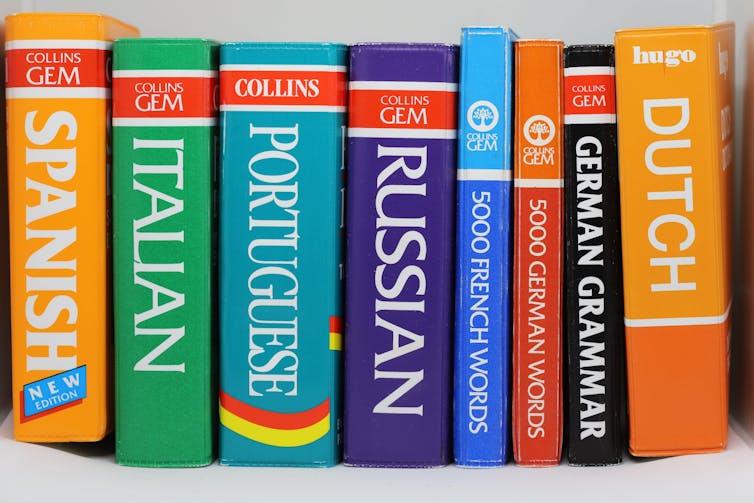
By integrating these four strands equally into your study routine, even outside of the classroom, the path to language mastery becomes clearer and more structured. If you’re feeling stuck in your language journey, examine the habits you’re using to learn.
Are you primarily using flashcards for vocabulary and grammar? These activities are useful, but they should only comprise about 25% of your total learning time. Are you primarily watching films? Again, consider how you might balance that meaning-focused input (if that’s how you’re using them) with learning activities in the other three strands.
Not every study session needs to comprise these four strands. But your overall study habits should include more or less equal time in each one.
And about my own Korean ability, once I started teaching my applied linguistics undergraduates in the UK about Paul Nation’s four strands, I became aware of the fact that most of my own Korean learning was in the language-focused learning strand.
So, I put down my flashcards and started reading Korean novels and watching Korean films. Despite no longer living in Korea, where I had enjoyed the advantage of being surrounded by the language, my language skills increased sharply while living in the UK. This surprised my Korean friends and I when I returned there for visits.
For those like me who are feeling stagnant in their language learning journey, re-balancing your approach may just be the key to breaking through the plateau.
- Language learning

Head of Evidence to Action

Supply Chain - Assistant/Associate Professor (Tenure-Track)

Education Research Fellow

OzGrav Postdoctoral Research Fellow

Casual Facilitator: GERRIC Student Programs - Arts, Design and Architecture
- Bipolar Disorder
- Therapy Center
- When To See a Therapist
- Types of Therapy
- Best Online Therapy
- Best Couples Therapy
- Managing Stress
- Sleep and Dreaming
- Understanding Emotions
- Self-Improvement
- Healthy Relationships
- Student Resources
- Personality Types
- Sweepstakes
- Guided Meditations
- Verywell Mind Insights
- 2024 Verywell Mind 25
- Mental Health in the Classroom
- Editorial Process
- Meet Our Review Board
- Crisis Support
Learning a New Language Is Hard, But Your Brain Will Thank You
Building a stronger brain, one lesson at a time
Oleh_Slobodeniuk / E+ / Getty
Why Learning a New Language Is So Hard
- How It Changes the Brain
- Practical Tips
Every night, no matter how exhausted I am, I carve out at least 5 to 10 minutes for a quick lesson on my language learning app. I might not be fluent yet, but according to the experts, my daily lessons have serious brain-boosting benefits.
"Learning a new language can be immensely helpful for cognitive health, particularly as we age. This is because language learning engages a wide range of complex cognitive abilities, including memory, attention, and problem-solving, which can help to create and strengthen connections in the brain," explains Dr. Roy Hamilton, MD , trustee of the McKnight Brain Research Foundation.
The benefits go beyond protecting the brain against the effects of aging. Experts also note that language learning can help foster social connections and empathy . We are all citizens of the world, and it’s important for us to stay connected with other cultures and people from different backgrounds.
Of course, knowing the benefits doesn’t necessarily make the process easy. Learning a new language takes time, practice, and diligence. Even if you stick with it every day for a long time, it can still be a struggle. But that’s exactly why learning a new language can be so beneficial. It challenges your brain in unique ways that, ultimately, help your mind stay healthy and strong.
At a Glance
People learn new languages for all kinds of reasons. Sometimes, it’s for work or school. Others enjoy the thrill of chatting with the locals when they’re on vacation. And sometimes, it’s just for fun.
However, it can also be a powerful way to boost your cognitive skills and maintain your brain’s health. It can build your cognitive reserve, stave off the effects of brain aging, and have helpful social and emotional benefits. Learning a new language as an adult is certainly more challenging, but your brain will thank you.
My daily Duolingo sessions aren’t my first foray into trying to learn a new language. But, like many people, my motivation dwindled once my high school foreign language credits were completed. Time and dedication are two common challenges when it comes to learning a new language. But a big part of the reason it’s so tough comes down to how your brain is wired.
Dr. Hamilton explains that there is an optimal developmental period–usually spanning infancy to around puberty–when the brain is particularly receptive to language. During this age, the brain's language networks possess a high degree of neuroplasticity , which is the brain's ability to adapt and change.
"Because of this, [children] can easily organize and reinforce themselves in response to being exposed to language. This allows children to learn languages naturally and efficiently—essentially automatically—if they are regularly exposed to those languages," Dr. Hamilton says.
Other factors that might affect your ability to pick up a new language as an adult include:
- Language complexity : Sometimes, other languages have linguistic complexities that can be challenging, especially if they’re very different from those of your native tongue. Dr. Hamilton notes that adults tend to rely on the thoughts and structures of their native language, which makes learning the sounds and grammatical rules of a new language trickier.
- Anxiety and self-consciousness: Dr. Hamilton explains that adults are more likely to feel anxious or self-conscious about learning a new language, which can stand in the way of their progress. Being scared to practice or embarrassed about making mistakes certainly doesn’t make it any easier!
- Learning methods : How you learn and practice is also important. Traditional learning methods may focus more on things like memorization and vocabulary, which may work for some people. However, others may find that approach tedious and difficult to stick with.
- Age : Let’s face it, it really can be harder to teach an old dog (or brain) new tricks. Experts suggest that the ability to learn new languages starts to decline once someone reaches adolescence and adulthood. “While the adult brain remains plastic, the rate at which new connections form slows down over time, making it harder to acquire new skills, including language,” Dr. Hamilton says. Plus, the stress and busyness of everyday life can make it difficult to find time to practice.
The Benefits of Learning a New Language
Learning a new language can definitely be a challenge–but that’s exactly why it can be so rewarding!
According to psychotherapist Kristie Tse, LMHC , clinical director and founder of Uncover Mental Health Counseling, “Learning a new language has profound benefits for brain health. It encourages the brain to be flexible and adaptable, as it requires quick thinking and problem-solving skills to comprehend and construct new sentences.”
Cognitive Benefits
Learning a new language doesn't just make you *sound* smarter. In one analysis, 90% of the studies they examined found that learning a new language leads to improvements in other academic subjects as well.
Such benefits don't just stem from increased literacy skills. Other research has found that second language learners also appear to make gains in their working memory, concentration, and creativity .
Dr. Hamilton also points to research findings showing that people who speak two or more languages have a delayed onset of dementia compared to those who only speak one.
"Speaking more than one language may improve so-called executive functions , such as the ability to switch fluidly between mental tasks, and may even positively impact other cognitive skills like visual-spatial abilities and reasoning," Dr. Hamilton says.
Emotional Benefits
On an emotional level, developing new language skills can also give you a greater sense of confidence and purpose . Such benefits can spill over into other areas of your life. You might not be a polyglot yet , but tackling one language can give you the boost in self-efficacy you need to keep working toward your language-learning goals.
Social Advantages
Hint: Knowing more than one language can be a great conversation starter . People are often interested in learning more about your learning journey. Plus, learning a new language can be a great opportunity to meet new people and forge new friendships over your shared interests.
Building these meaningful connections not only helps widen your social circle (and improves your social support system ), but it also brings a deeper sense of cultural perspective.
It not only enriches cognitive abilities but also serves as a bridge to understanding cultural complexities and enhancing emotional resilience .
How the Brain Changes When You Learn a New Language
So, what exactly is going on inside your head when you're conjugating verbs and learning how to roll your Rs? Learning a new language does a lot more than just expand your linguistic skills–it actually leads to significant changes in your brain.
Researchers have found that the brain actually starts to rewire itself in response to learning a new language. Such changes not only challenge your brain, but they can also help you stay more adaptable as you age.
What other kinds of brain-boosting benefits can you expect?
It Can Protect Your White Matter
White matter is the fatty substance that covers brain axons, which allows signals to travel through the brain quickly and efficiently. Evidence suggests that learning a second language helps protect white matter from the effects of aging, which can help you keep your brain healthier as you grow older.
It Can Increase Grey Matter Volume
Grey matter is the brain material associated with learning, movement, emotions, and memory. Learning and using a new language helps to increase grey matter volume in important areas of the brain.
It Leads to Changes in Brain Structure
One study found that bilingualism increases the size of certain brain regions. Such increases also tend to grow as people gain more bilingual experience. The findings suggest that learning a new language creates complex changes in brain structures that are similar to those of other cognitively demanding tasks.
No single activity is a one-size-fits-all solution to maintaining healthy cognition throughout one’s brain span, but language learning is certainly a really great way to contribute to the health of one’s brain.
Practical Tips for Learning a New Language
Learning a new language as an adult can be really challenging. Fortunately, there are plenty of effective (and fun) ways to achieve your language-learning goals:
Try a Language App
Language-learning apps can be a great way to get started with a new language. Babbel, Duolingo, and Memrise are a few options you might consider.
Practice Daily
Consistency is the key! Even just 5 to 10 minutes a day can help.
"Being exposed to and using the target language on a daily basis, even in small amounts, can significantly boost retention and fluency," Dr. Hamilton says.
Be sure to turn on app notifications and use app widgets if they are available on your device. These regular reminders can help you stay on track.
Immerse Yourself
Don't just limit your daily learning to your lessons. "It's important to immerse oneself as much as possible in the language one wants to acquire. This can be done through media, such as movies, music, and podcasts, which helps to build listening skills and exposes the learner to the language being used in its natural context," Dr. Hamilton suggests.
Memorize Vocabulary
Rote memorization may not be the most exciting part of learning, but it’s important for laying the foundation you'll need to succeed when learning a new language. Flashcards, whether you’re using an app or making them yourself, can be a great tool for nailing those basic vocabulary terms.
Learn Grammar
Getting used to the grammatical structure of a new language can be tough. Start with the basics, like verb conjugations and sentence structure. Then, challenge yourself with more complex sentences. A grammar book or app can be a helpful tool.
Find a Conversation Partner
Getting actual experience speaking your target language is vital! "Finding a language partner or joining a conversation group can provide the necessary practice in speaking and listening, which are critical components of language proficiency," says Dr. Hamilton.
Integrate Other Learning Tools
As you gain more skill and experience, start looking for other tools and resources that can help you build your language abilities. Listening to podcasts or radio broadcasts in your target language can be a great way to gain a greater appreciation and understanding of the nuances of the language.
Try reading a book in your target language! Kids' books can be perfect for beginners, and as you get more advanced, you might try reading a book you already know and love in your new language.
Tip: Try Spaced Repetition System (SRS)
Dr. Hamilton recommends spaced repetition system (SRS) when learning a new language. "This is a learning technique grounded in memory research that helps one to remember new vocabulary items by rehearsing them in a systematic manner. Reviews of words one remembers well are gradually spaced out, focusing effort on more on challenging items; this makes one’s study time more efficient and helps vocabulary to stick in long-term memory," he explains.
Learning new things is good for your brain, and experts suggest that learning a new language, in particular, can have numerous important benefits for your cognitive functioning and health. Dr. Hamilton recommends managing your expectations as an adult language learner.
"Language learning is a gradual process," he says, "and embracing mistakes as part of the learning journey and staying motivated through setting achievable goals can make the experience both effective and enjoyable."
Woll B, Wei L. Cognitive benefits of language learning: Broadening our perspectives . The British Academy.
Bialystok E. The bilingual adaptation: How minds accommodate experience . Psychol Bull . 2017;143(3):233-262. doi:10.1037/bul0000099
Mendez MF, Chavez D, Akhlaghipour G. Bilingualism delays expression of Alzheimer's clinical syndrome . Dement Geriatr Cogn Disord . 2019;48(5-6):281-289. doi:10.1159/000505872
Klimova B. Learning a foreign language: A review on recent findings about its effect on the enhancement of cognitive functions among healthy older individuals . Front Hum Neurosci . 2018;12:305. doi:10.3389/fnhum.2018.00305
Wei X, Gunter TC, Adamson H, et al. White matter plasticity during second language learning within and across hemispheres . Proc Natl Acad Sci USA . 2024;121(2):e2306286121. doi:10.1073/pnas.2306286121
Anderson JAE, Grundy JG, De Frutos J, Barker RM, Grady C, Bialystok E. Effects of bilingualism on white matter integrity in older adults . Neuroimage . 2018;167:143-150. doi:10.1016/j.neuroimage.2017.11.038
Ehling R, Amprosi M, Kremmel B, et al. Second language learning induces grey matter volume increase in people with multiple sclerosis . PLoS One . 2019;14(12):e0226525. doi:10.1371/journal.pone.0226525
Korenar M, Treffers-Daller J, Pliatsikas C. Dynamic effects of bilingualism on brain structure map onto general principles of experience-based neuroplasticity . Sci Rep . 2023;13(1):3428. doi:10.1038/s41598-023-30326-3
By Kendra Cherry, MSEd Kendra Cherry, MS, is a psychosocial rehabilitation specialist, psychology educator, and author of the "Everything Psychology Book."
While data science and machine learning are related, they are very different fields. In a nutshell, data science brings structure to big data while machine learning focuses on learning from the data itself. This post will dive deeper into the nuances of each field.
Data science is a broad, multidisciplinary field that extracts value from today’s massive data sets. It uses advanced tools to look at raw data, gather a data set, process it, and develop insights to create meaning. Areas making up the data science field include mining, statistics, data analytics, data modeling, machine learning modeling and programming.
Ultimately, data science is used in defining new business problems that machine learning techniques and statistical analysis can then help solve. Data science solves a business problem by understanding the problem, knowing the data that’s required, and analyzing the data to help solve the real-world problem.
Machine learning (ML) is a subset of artificial intelligence (AI) that focuses on learning from what the data science comes up with. It requires data science tools to first clean, prepare and analyze unstructured big data. Machine learning can then “learn” from the data to create insights that improve performance or inform predictions.
Just as humans can learn through experience rather than merely following instructions, machines can learn by applying tools to data analysis. Machine learning works on a known problem with tools and techniques, creating algorithms that let a machine learn from data through experience and with minimal human intervention. It processes enormous amounts of data a human wouldn’t be able to work through in a lifetime and evolves as more data is processed.
Across most companies, finding, cleaning and preparing the proper data for analysis can take up to 80% of a data scientist’s day. While it can be tedious, it’s critical to get it right.
Data from various sources, collected in different forms, require data entry and compilation. That can be made easier today with virtual data warehouses that have a centralized platform where data from different sources can be stored.
One challenge in applying data science is to identify pertinent business issues. For example, is the problem related to declining revenue or production bottlenecks? Are you looking for a pattern you suspect is there, but that’s hard to detect? Other challenges include communicating results to non-technical stakeholders, ensuring data security, enabling efficient collaboration between data scientists and data engineers, and determining appropriate key performance indicator (KPI) metrics.
With the increase in data from social media, e-commerce sites, internet searches, customer surveys and elsewhere, a new field of study based on big data emerged. Those vast datasets, which continue to increase, let organizations monitor buying patterns and behaviors and make predictions.
Because the datasets are unstructured, though, it can be complicated and time-consuming to interpret the data for decision-making. That’s where data science comes in.
The term data science (link resides outside of ibm.com) was first used in the 1960s when it was interchangeable with the phrase “computer science.” “Data science” was first used as an independent discipline (link resides outside of ibm.com) in 2001. Both data science and machine learning are used by data engineers and in almost every industry.
The fields have evolved such that to work as a data analyst who views, manages and accesses data, you need to know Structured Query Language (SQL) as well as math, statistics, data visualization (to present the results to stakeholders) and data mining. It’s also necessary to understand data cleaning and processing techniques. Because data analysts often build machine learning models, programming and AI knowledge are also valuable. as well as math, statistics, data visualization (to present the results to stakeholders) and data mining. It’s also necessary to understand data cleaning and processing techniques. Because data analysts often build machine learning models, programming and AI knowledge are also valuable.
Data science is widely used in industry and government, where it helps drive profits, innovate products and services, improve infrastructure and public systems and more.
Some examples of data science use cases include:
- An international bank uses ML-powered credit risk models to deliver faster loans over a mobile app.
- A manufacturer developed powerful, 3D-printed sensors to guide driverless vehicles.
- A police department’s statistical incident analysis tool helps determine when and where to deploy officers for the most efficient crime prevention.
- An AI-based medical assessment platform analyzes medical records to determine a patient’s risk of stroke and predict treatment plan success rates.
- Healthcare companies are using data science for breast cancer prediction and other uses.
- One ride-hailing transportation company uses big data analytics to predict supply and demand, so they can have drivers at the most popular locations in real time. The company also uses data science in forecasting, global intelligence, mapping, pricing and other business decisions.
- An e-commerce conglomeration uses predictive analytics in its recommendation engine.
- An online hospitality company uses data science to ensure diversity in its hiring practices, improve search capabilities and determine host preferences, among other meaningful insights. The company made its data open-source, and trains and empowers employees to take advantage of data-driven insights.
- A major online media company uses data science to develop personalized content, enhance marketing through targeted ads and continuously update music streams, among other automation decisions.
The start of machine learning, and the name itself, came about in the 1950s. In 1950, data scientist Alan Turing proposed what we now call the Turing Test (link resides outside of ibm.com), which asked the question, “Can machines think?” The test is whether a machine can engage in conversation without a human realizing it’s a machine. On a broader level, it asks if machines can demonstrate human intelligence. This led to the theory and development of AI.
IBM computer scientist Arthur Samuel (link resides outside of ibm.com) coined the phrase “machine learning” in 1952. He wrote a checkers-playing program that same year. In 1962, a checkers master played against the machine learning program on an IBM 7094 computer, and the computer won.
Today, machine learning has evolved to the point that engineers need to know applied mathematics, computer programming, statistical methods, probability concepts, data structure and other computer science fundamentals, and big data tools such as Hadoop and Hive. It’s unnecessary to know SQL, as programs are written in R, Java, SAS and other programming languages. Python is the most common programming language used in machine learning.
Machine learning and deep learning are both subsets of AI. Deep learning teaches computers to process data the way the human brain does. It can recognize complex patterns in text, images, sounds, and other data and create accurate insights and predictions. Deep learning algorithms are neural networks modeled after the human brain.
Subcategories of machine learning
Some of the most commonly used machine learning algorithms (link resides outside of ibm.com) include linear regression , logistic regression, decision tree , Support Vector Machine (SVM) algorithm, Naïve Bayes algorithm and KNN algorithm . These can be supervised learning, unsupervised learning or reinforced/reinforcement learning.
Machine learning engineers can specialize in natural language processing and computer vision, become software engineers focused on machine learning and more.
There are some ethical concerns regarding machine learning, such as privacy and how data is used. Unstructured data has been gathered from social media sites without the users’ knowledge or consent. Although license agreements might specify how that data can be used, many social media users don’t read that fine print.
Another problem is that we don’t always know how machine learning algorithms work and “make decisions.” One solution to that may be releasing machine learning programs as open-source, so that people can check source code.
Some machine-learning models have used datasets with biased data, which passes through to the machine-learning outcomes. Accountability in machine learning refers to how much a person can see and correct the algorithm and who is responsible if there are problems with the outcome.
Some people worry that AI and machine learning will eliminate jobs. While it may change the types of jobs that are available, machine learning is expected to create new and different positions. In many instances, it handles routine, repetitive work, freeing humans to move on to jobs requiring more creativity and having a higher impact.
Well-known companies using machine learning include social media platforms, which gather large amounts of data and then use a person’s previous behavior to forecast and predict their interests and desires. The platforms then use that information and predictive modeling to recommend relevant products, services or articles.
On-demand video subscription companies and their recommendation engines are another example of machine learning use, as is the rapid development of self-driving cars. Other companies using machine learning are tech companies, cloud computing platforms, athletic clothing and equipment companies, electric vehicle manufacturers, space aviation companies, and many others.
Practicing data science comes with challenges. There can be fragmented data, a short supply of data science skills, and tools, practices, and frameworks to choose between that have rigid IT standards for training and deployment. It can also be challenging to operationalize ML models that have unclear accuracy and predictions that are difficult to audit.
IBM’s data science and AI lifecycle product portfolio is built upon our longstanding commitment to open-source technologies. It includes a range of capabilities that enable enterprises to unlock the value of their data in new ways.
Watsonx is a next generation data and AI platform built to help organizations multiply the power of AI for business. The platform comprises three powerful components: the watsonx.ai studio for new foundation models, generative AI and machine learning; the watsonx.data fit-for-purpose store for the flexibility of a data lake and the performance of a data warehouse; plus, the watsonx.governance toolkit, to enable AI workflows that are built with responsibility, transparency and explainability.
Together, watsonx offers organizations the ability to:
- Train, tune and deploy AI across your business with watsonx.ai
- Scale AI workloads, for all your data, anywhere with watsonx.data
- Enable responsible, transparent and explainable data and AI workflows with watsonx.governance
Learn more about IBM watsonx

IMAGES
COMMENTS
Download the Language Arts Subject for High School: Linguistic Borrowing presentation for PowerPoint or Google Slides. High school students are approaching adulthood, and therefore, this template's design reflects the mature nature of their education. Customize the well-defined sections, integrate multimedia and interactive elements and allow ...
Language Learning PowerPoint template. Number of slides: 10. Signup Free to download. Language learning is the active process of acquiring the skills to communicate in a foreign language. Professionals that know how to express their thoughts, feelings, and ideas in a second or third language are highly demanded in modern companies.
These language presentation templates are suitable for language teachers, linguists, language learning centers, and educational institutions. They can be used to create engaging presentations on language learning techniques, linguistic theories, language teaching methodologies, and cultural aspects of different languages.
Here are a few topic ideas for PowerPoint presentations on English: Introduction to English Grammar: This presentation can cover the basic components of English grammar, including parts of speech, sentence structure, and common grammatical rules. English Vocabulary Building: Explore strategies for expanding your English vocabulary, such as word ...
Research confirms that in order for ELLs to acquire English they must engage in oral language practice and be given the opportunity to use language in meaningful ways for social and academic purposes (Williams & Roberts, 2011). Teaching students to design effective oral presentations has also been found to support thinking development as "the ...
That's why we've curated a selection of Google Slides and PPT templates that focus on language. From vibrant backgrounds to sleek typography, our editable designs give your presentation that extra flare. Save time and impress your audience with a template that fits your language, whether you're presenting a language-learning app or a cultural ...
As learners, listening to presentations about language learning, you can not only get some useful tips, but also get listening practice at the same time. When using them as a teacher for class resources, the content would likely be too difficult for beginner learners, but they can be great for intermediate to advanced level learners ...
Step 3: Teacher explains that 'keywording', with other strategies, may work well for vocabulary learning. Models the technique and emphasizes benefits. Step 4: Students practice 'keywording' with new vocabulary task from teacher - teacher helps at first then allows students to work on their own (scaffolding).
Cambridge University Press, 2018. This book, a follow-up to the editors' successful guide to second language (L2) teacher education (Burns and Richards 2009), is a clear and concise introduction to the research and scholarship across 36 topics related to learning English as an L2. Although the title indicates that the focus is on English ...
Talks that'll inspire you to learn a new language. Open up a whole new world of possibilities and experiences with these talks that show the benefit (and fun!) of learning a new language. Watch now. Add to list. 09:51. John McWhorter. 4 reasons to learn a new language. 9 minutes 51 seconds. 05:57.
presentation in English language classroom, the author here attempts such a study but in a different context, that is, in a Spoken English classroom of a language learning centre which is solely set up for adult learners who stay just 18 days at the centre and get back home after acquiring sufficient improvement in English communication.
Learning another language? A collection of TED Talks to indulge in your linguistic desires. (Pro tip: Select subtitles in your preferred language to read along, too.) See all playlists on Language. Skip Talks. Talks about Language. 12:33. Isaac Saul. 3 ideas for communicating across the political divide.
The free Language Learning PowerPoint Template has a beige background containing four dictionaries. Therefore, the template is suitable when you have to give a presentation on popular foreign languages, language learning methods and apps, online courses, etc. It is compatible with various topics such as grammar, vocabulary, reading, English ...
An Image/Link below is provided (as is) to download presentation Download Policy: ... • Second language learning is parallel to first language learning and should reflect the same naturalistic processes • Listening should develop before speaking • Children respond physically to spoken language, and adult learners learn better if they do ...
Learning languages. 55 Learning languages English ESL powerpoints. SORT BY. Most popular. TIME PERIOD. All-time. apop2020. Guess the First Lett. This is a quiz game . 5284 uses. Stefanou. EVERYTHING ABOUT ME . HAS BEEN EDITED Also. 4077 uses. martarizz. time of the day. presentation about t. 3465 uses. Megapooh85. Question words. A PPP very ...
This ppt is made to . 2301 uses. Kelz1. learning styles . This is a presentati. 1016 uses. rorycrippps. Learning Shapes. An easy way for youn. 705 uses. xnagy. Learning Styles. A presentation that . ... Learning English Lan. These days many peop. 99 uses. Luffi666. Learning-Centered Ap. Discussion for Prese.
If you want your audience to understand your message, your language must be simple and clear. Use short words and short sentences. Do not use jargon, unless you are certain that your audience understands it. In general, talk about concrete facts rather than abstract ideas. Use active verbs instead of passive verbs.
Improving Foreign Languages Learning is necessary. to give more opportunities to all citizens. 1. The language-friendly school. schools and training institutions may adopt a. holistic approach to the teaching of language. appropriate connections between the teaching of. the mother tongue, foreign languages, the.
American students, who are future employees, need to be able to compete for a job with anyone, anywhere. Knowing, understanding, and applying a foreign language will help them to succeed in work and in life. I believe that every student, from preschool to college, would greatly benefit from learning a foreign language.
One of the motivational benefits of language-focused learning is how clearly improvement can be seen. Yesterday, you may only have known 47% of vocabulary items, but today you scored 72%.
Of course, knowing the benefits doesn't necessarily make the process easy. Learning a new language takes time, practice, and diligence. Even if you stick with it every day for a long time, it can still be a struggle. But that's exactly why learning a new language can be so beneficial. It challenges your brain in unique ways that, ultimately ...
Data science is a broad, multidisciplinary field that extracts value from today's massive data sets. It uses advanced tools to look at raw data, gather a data set, process it, and develop insights to create meaning. Areas making up the data science field include mining, statistics, data analytics, data modeling, machine learning modeling and programming.